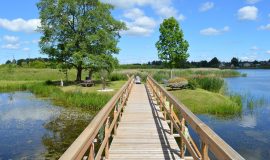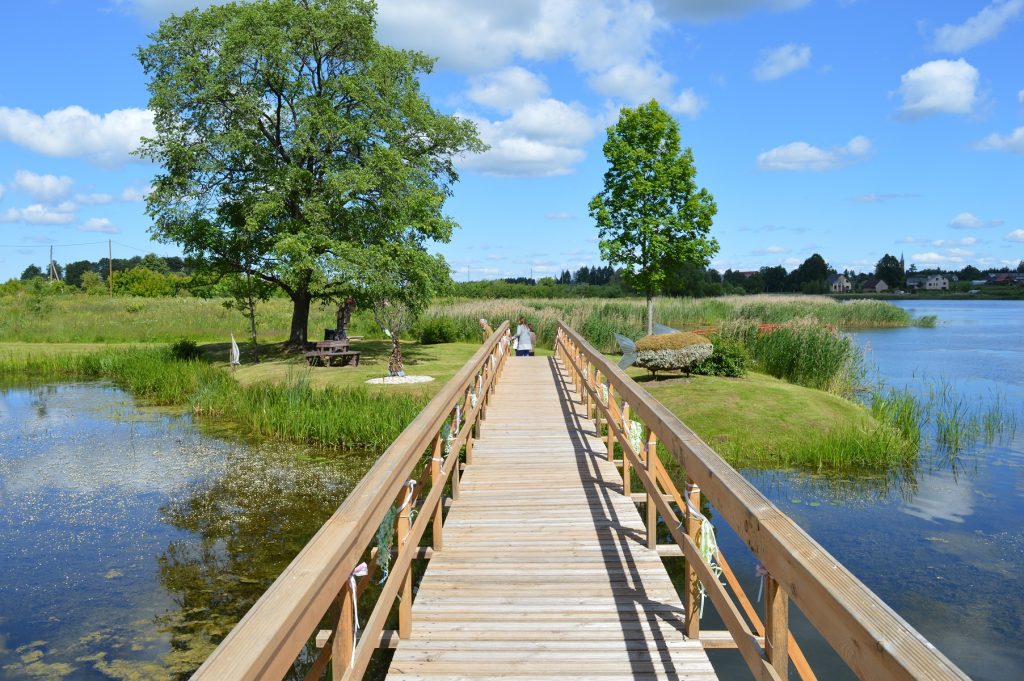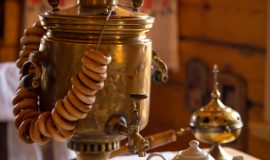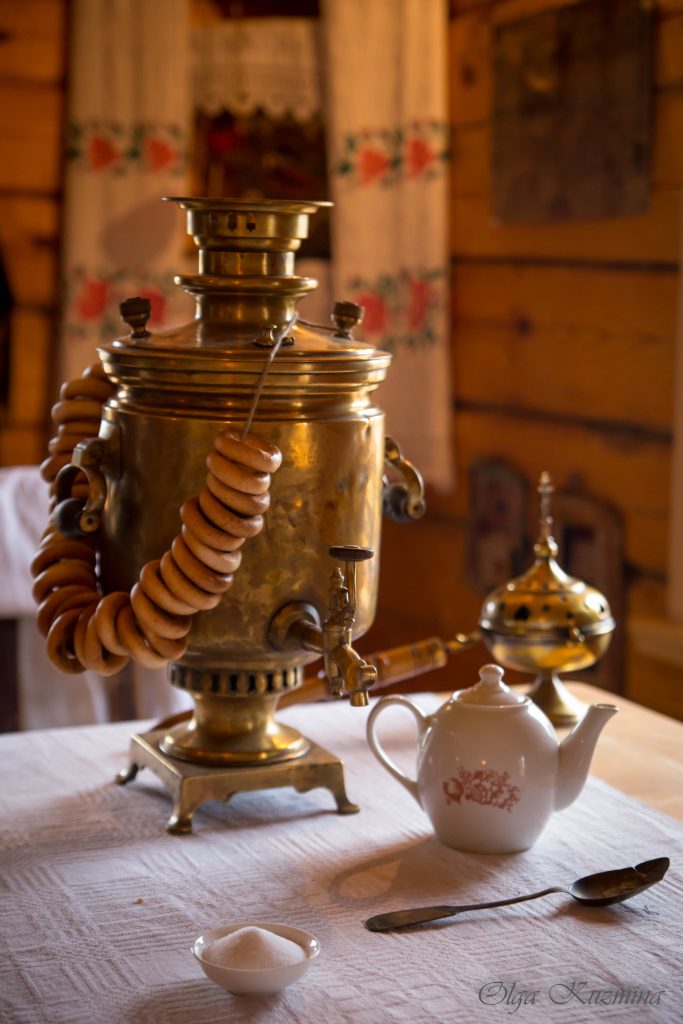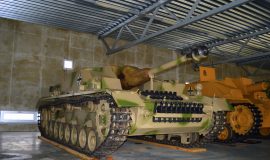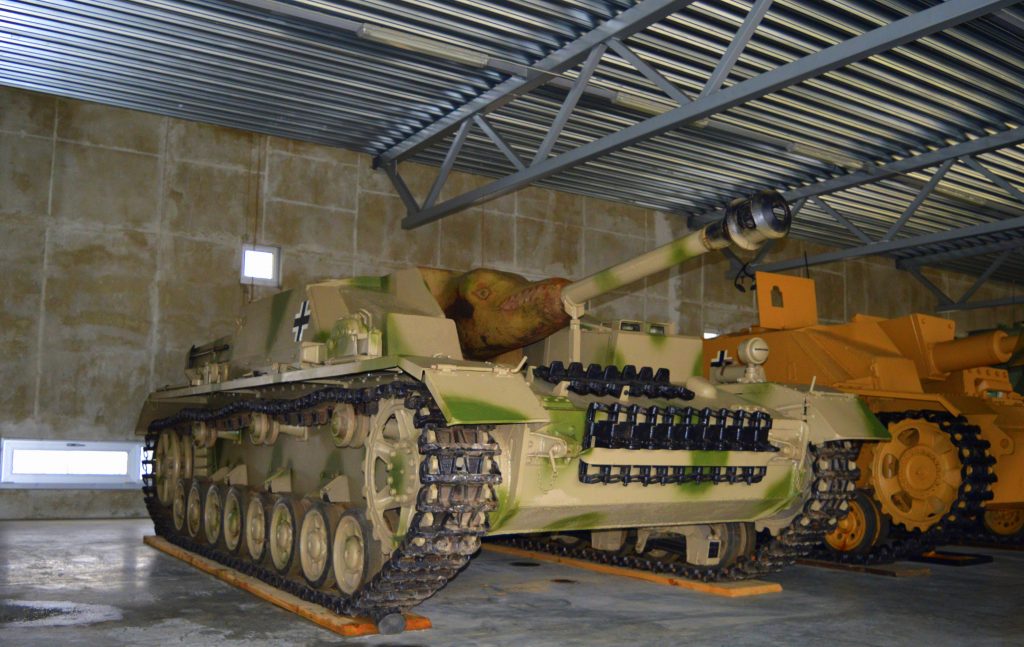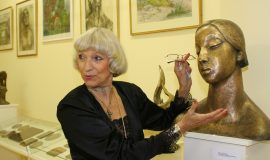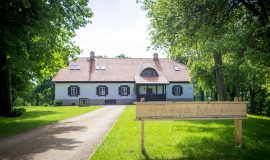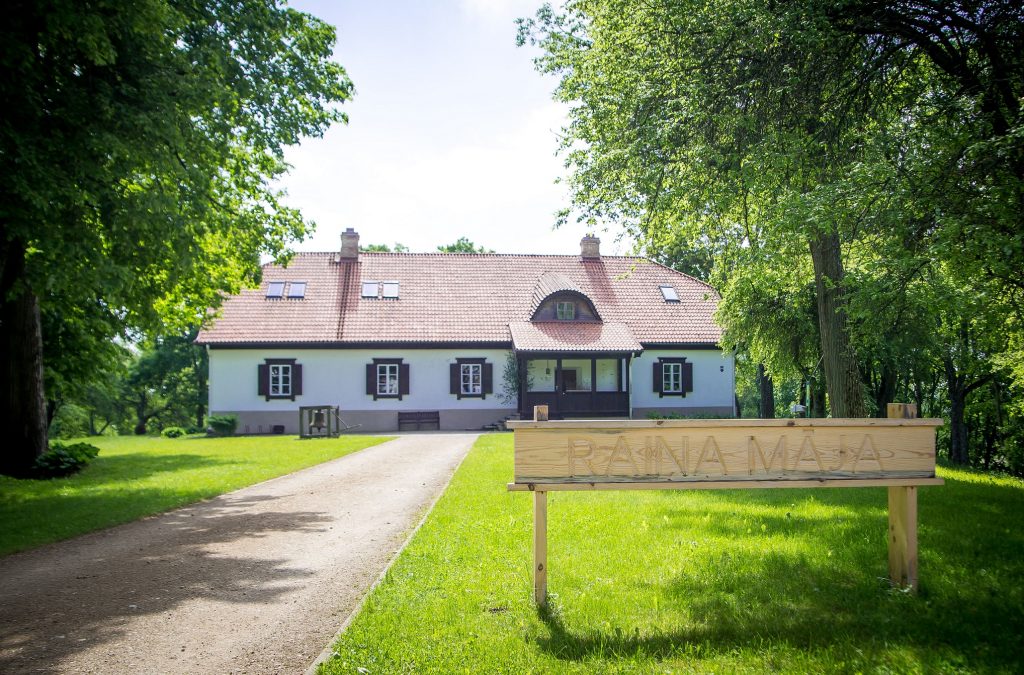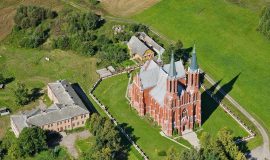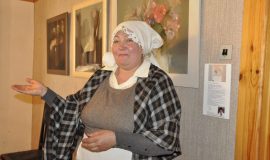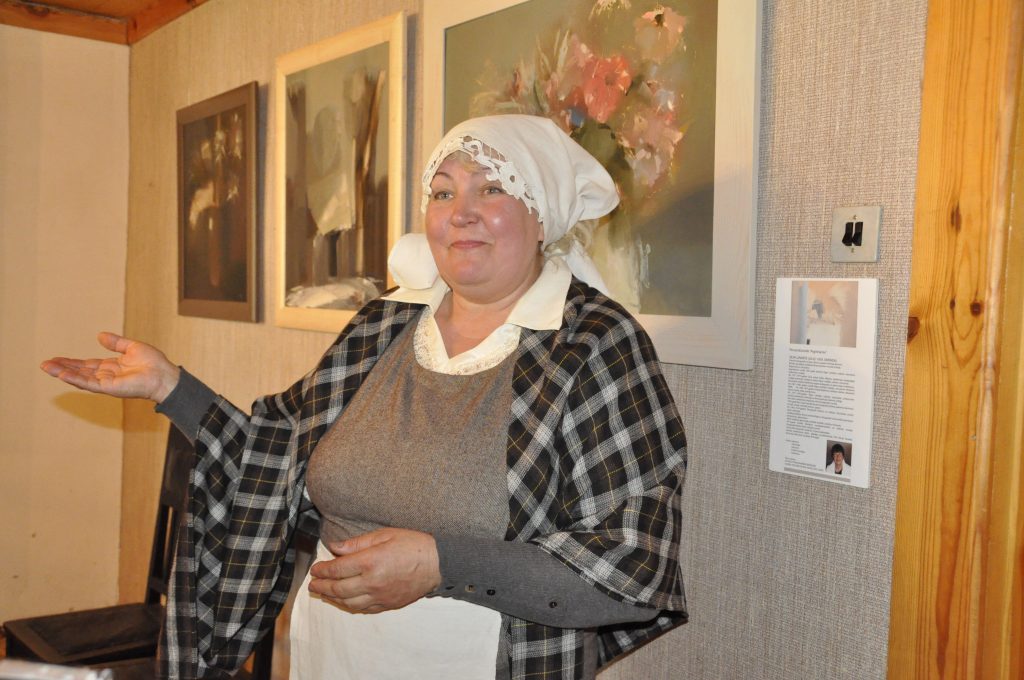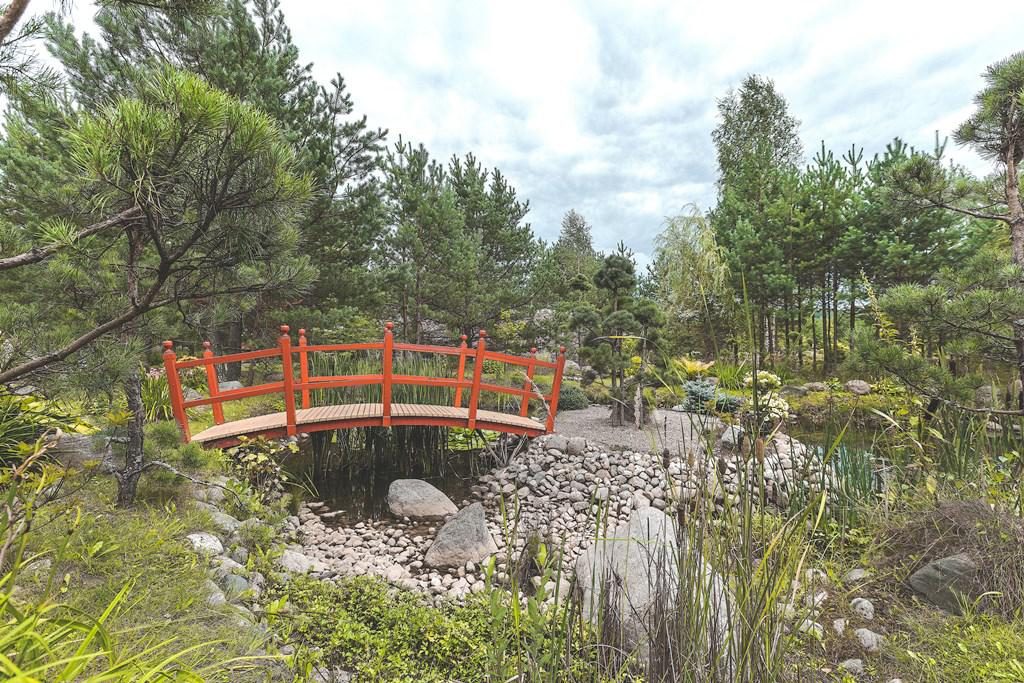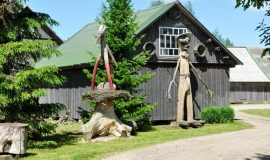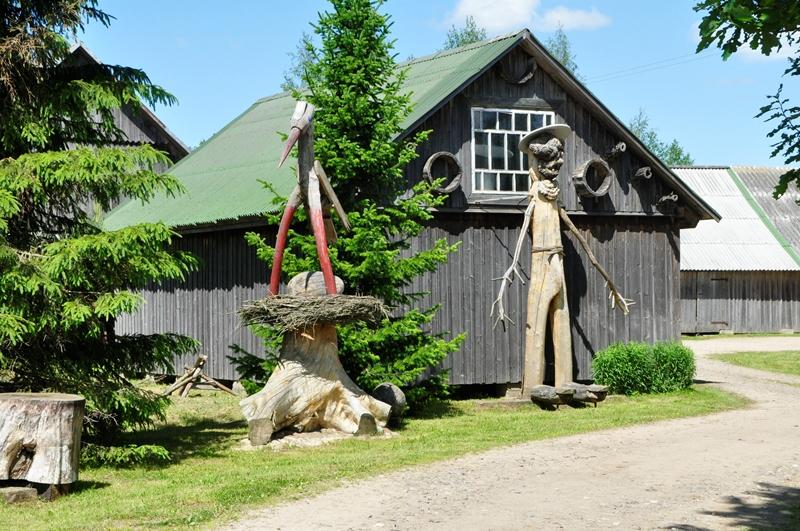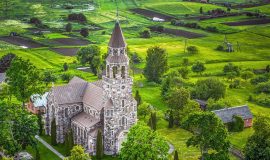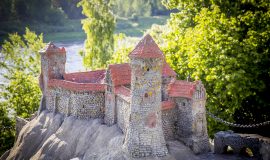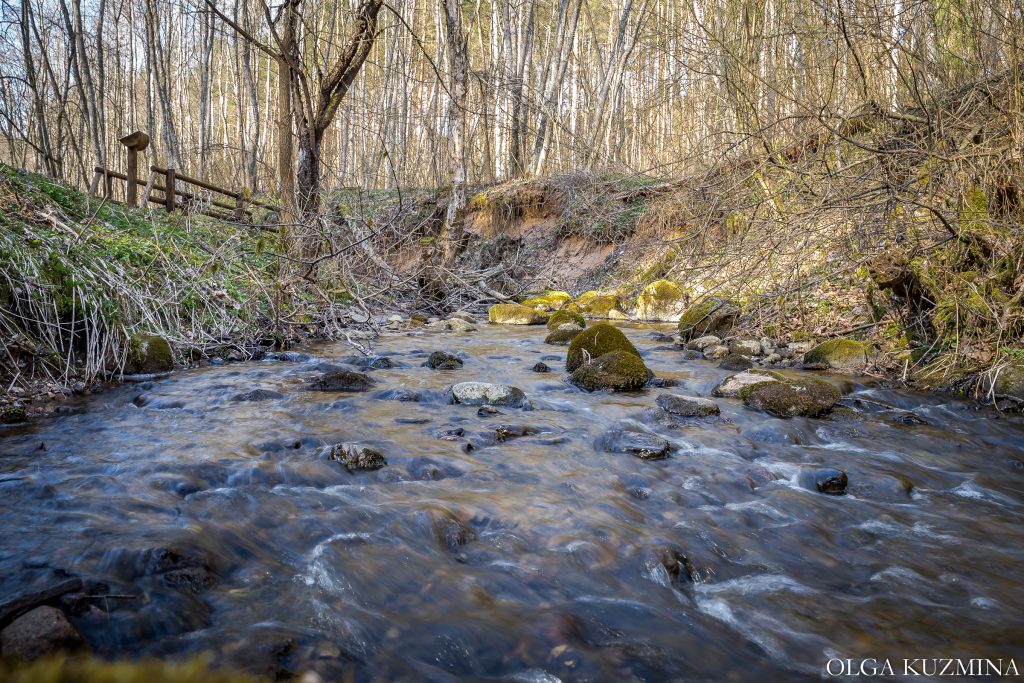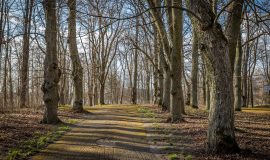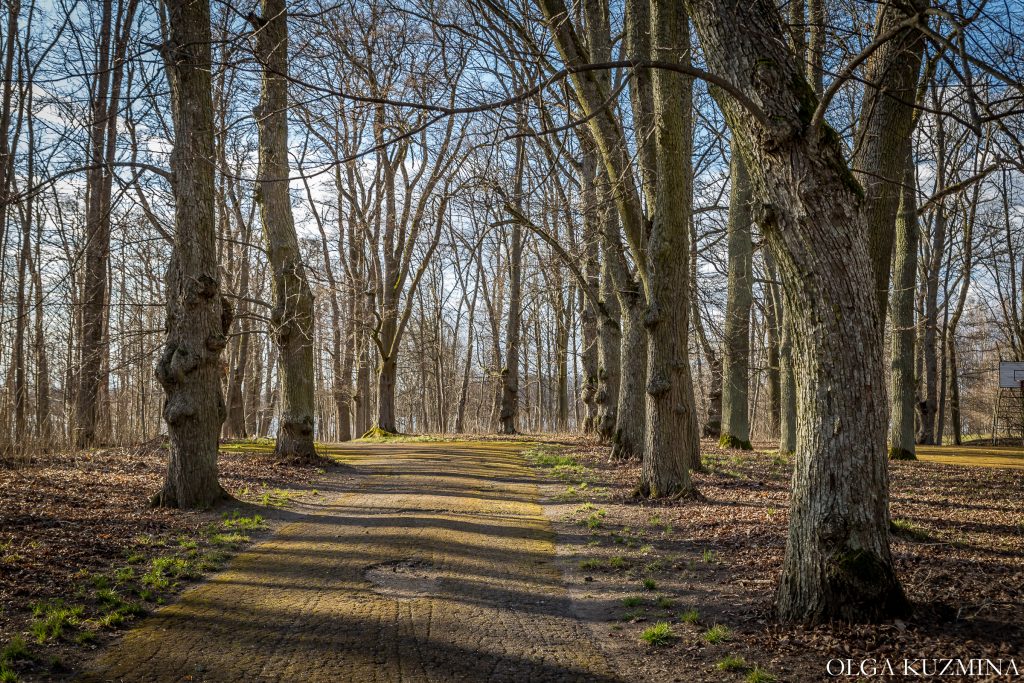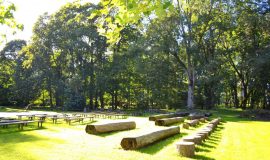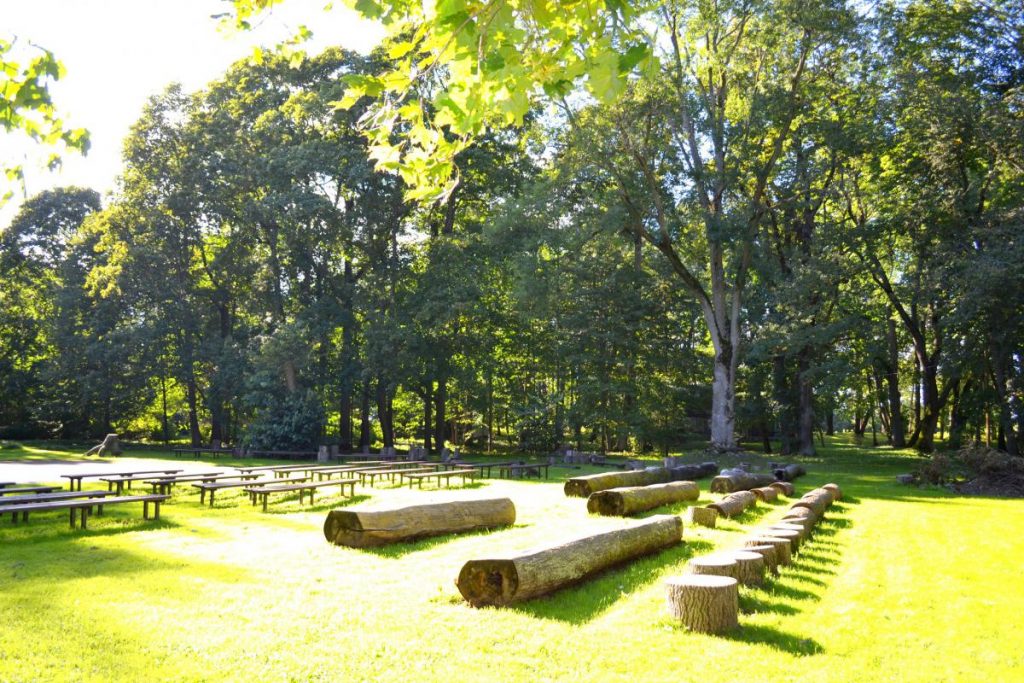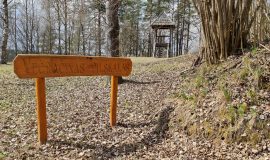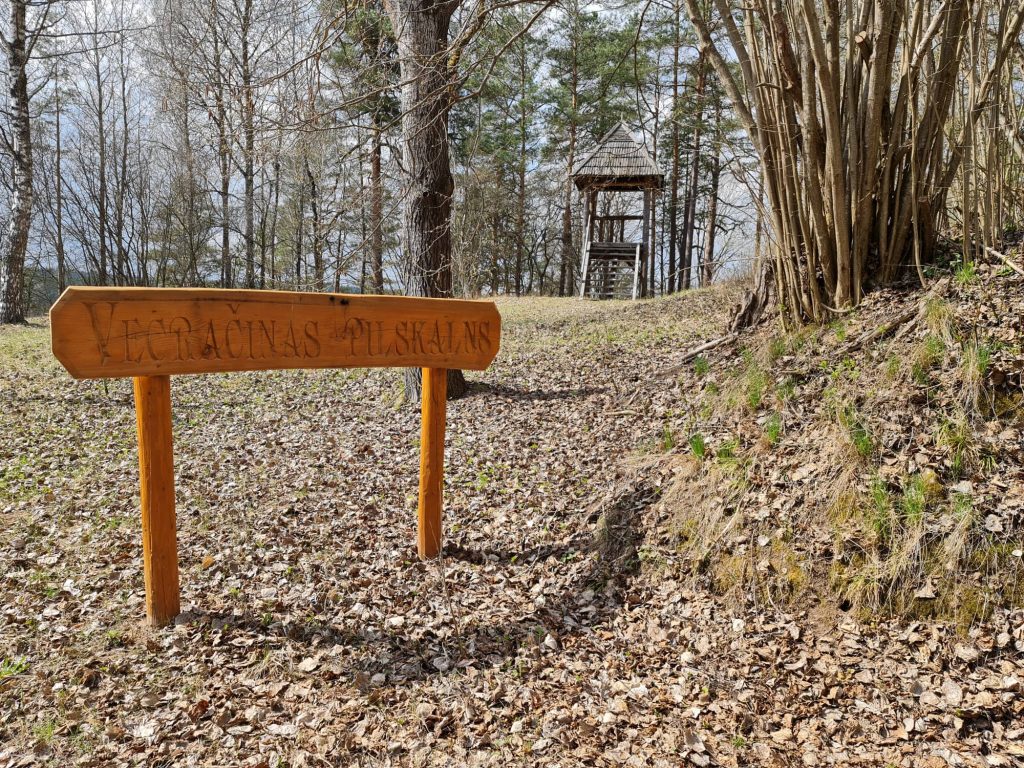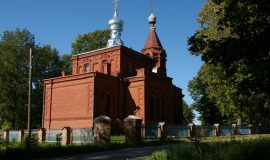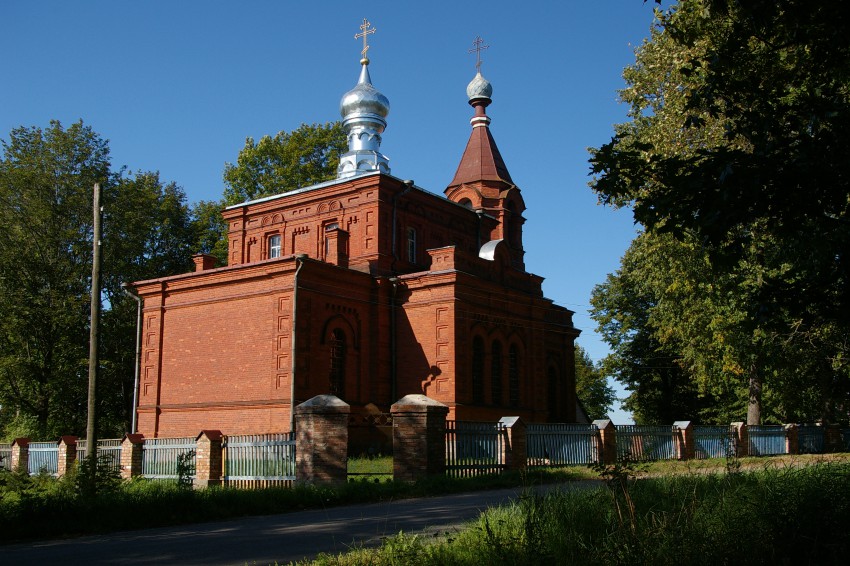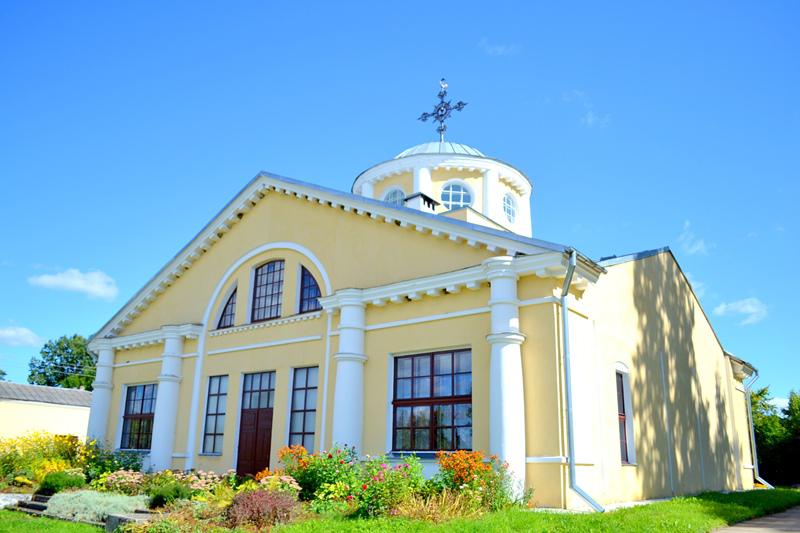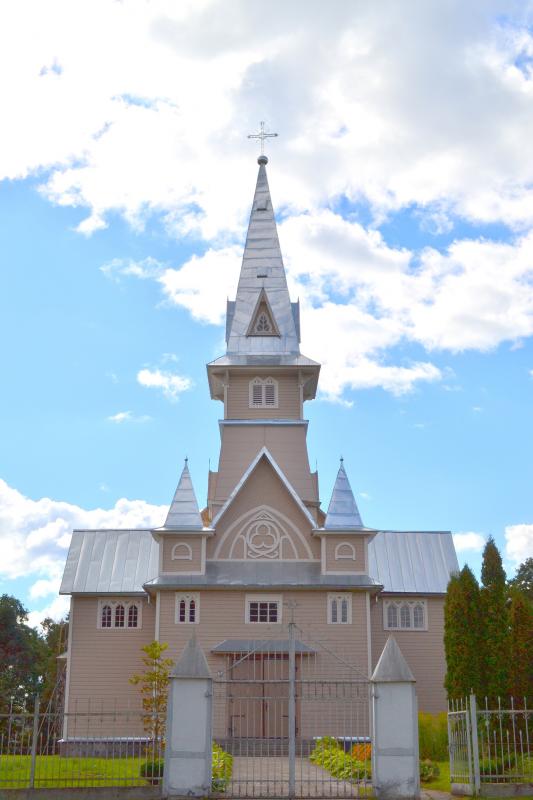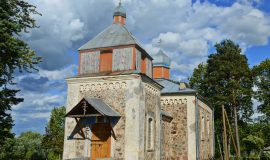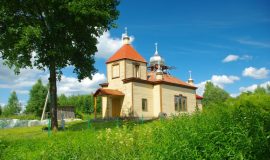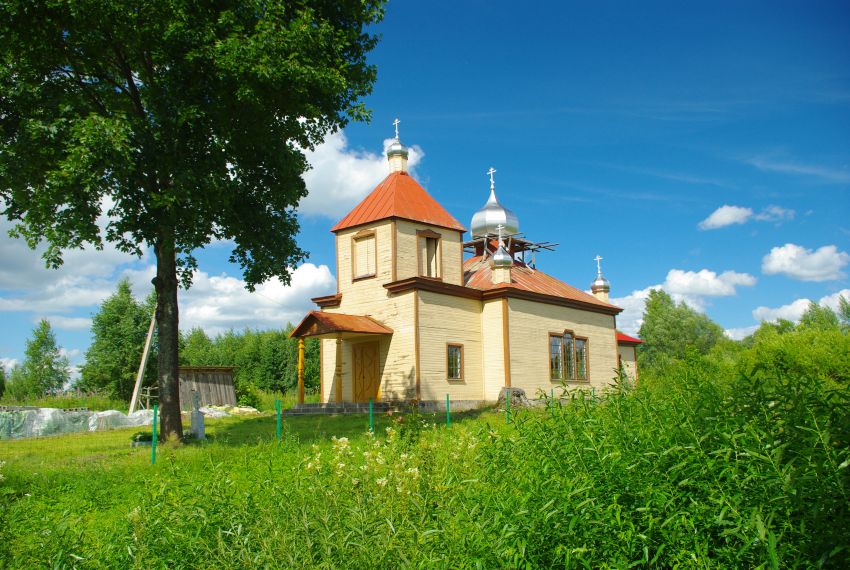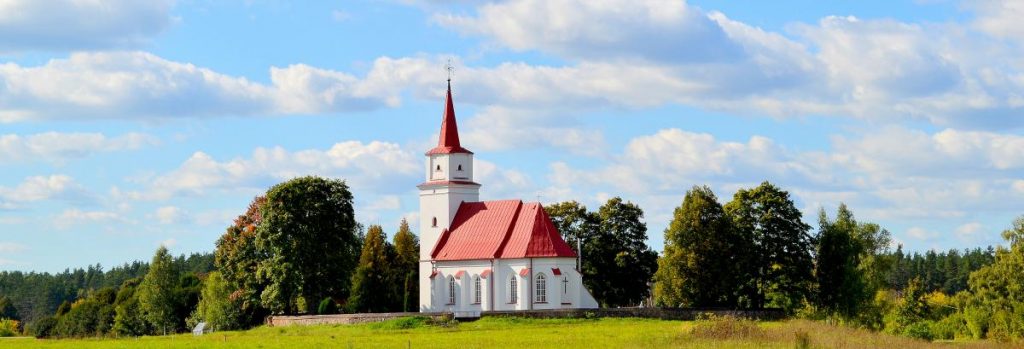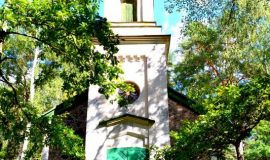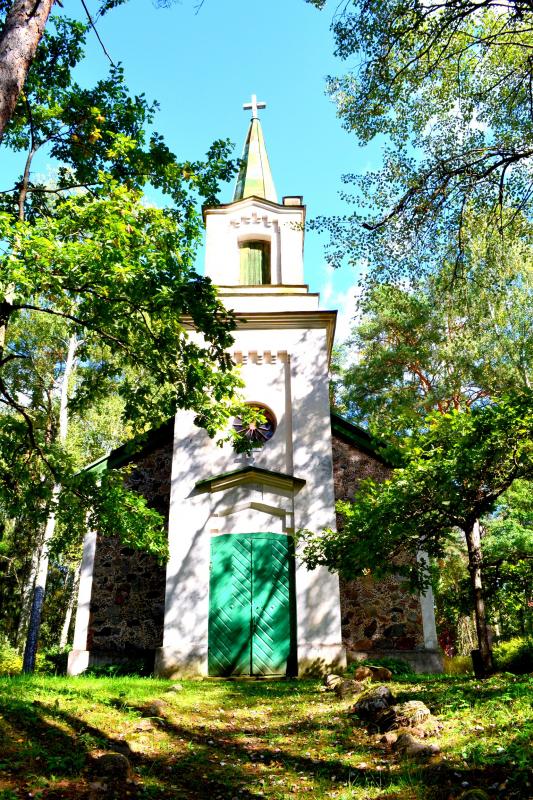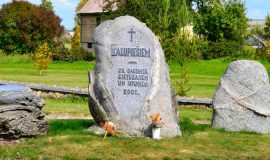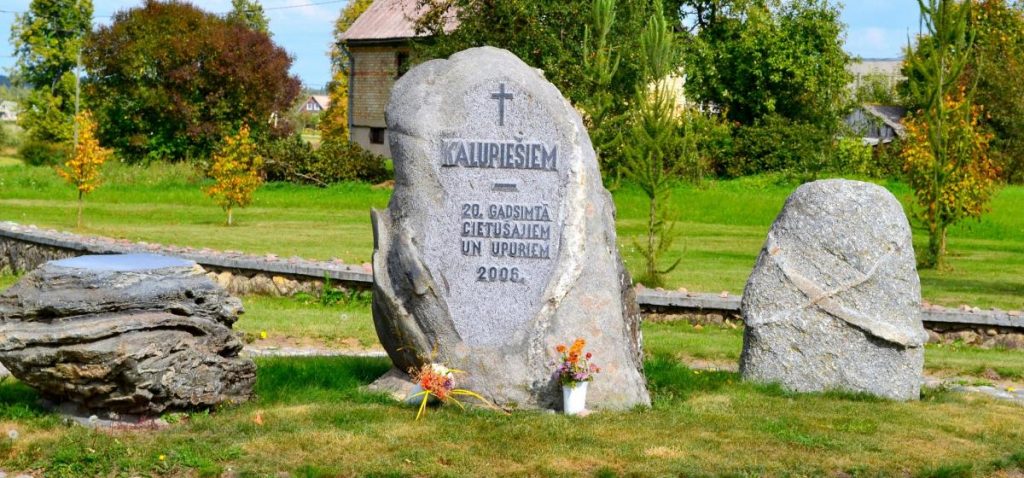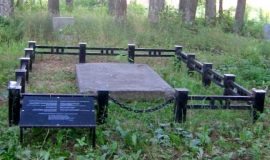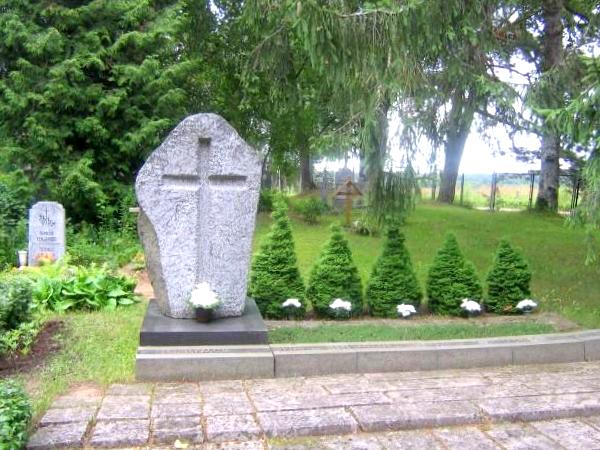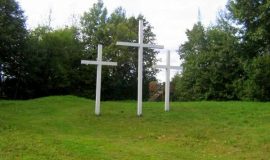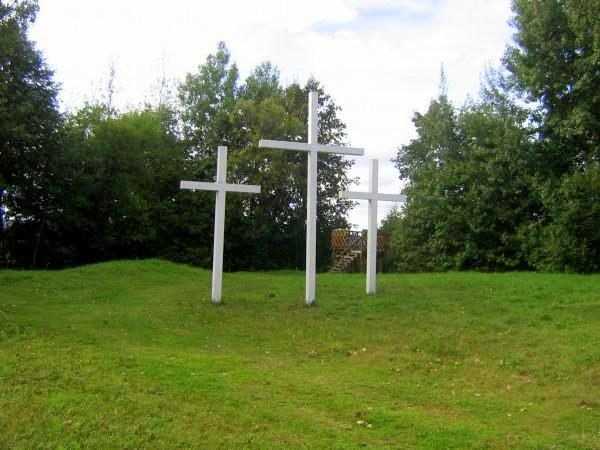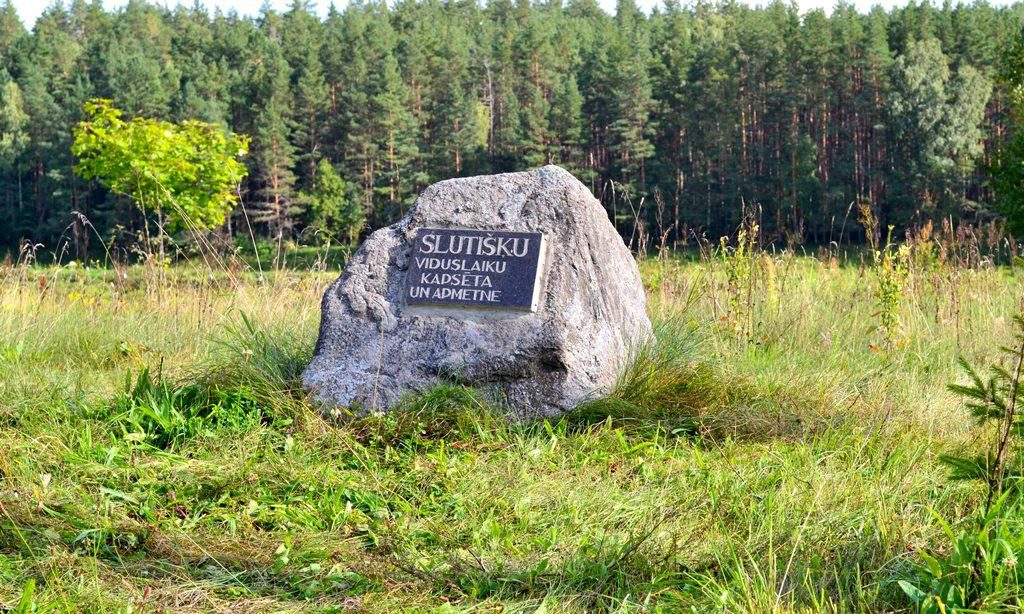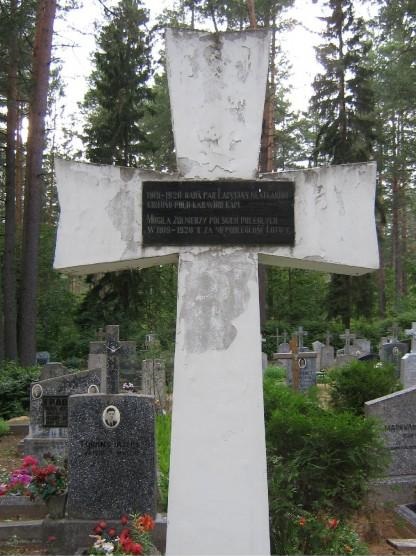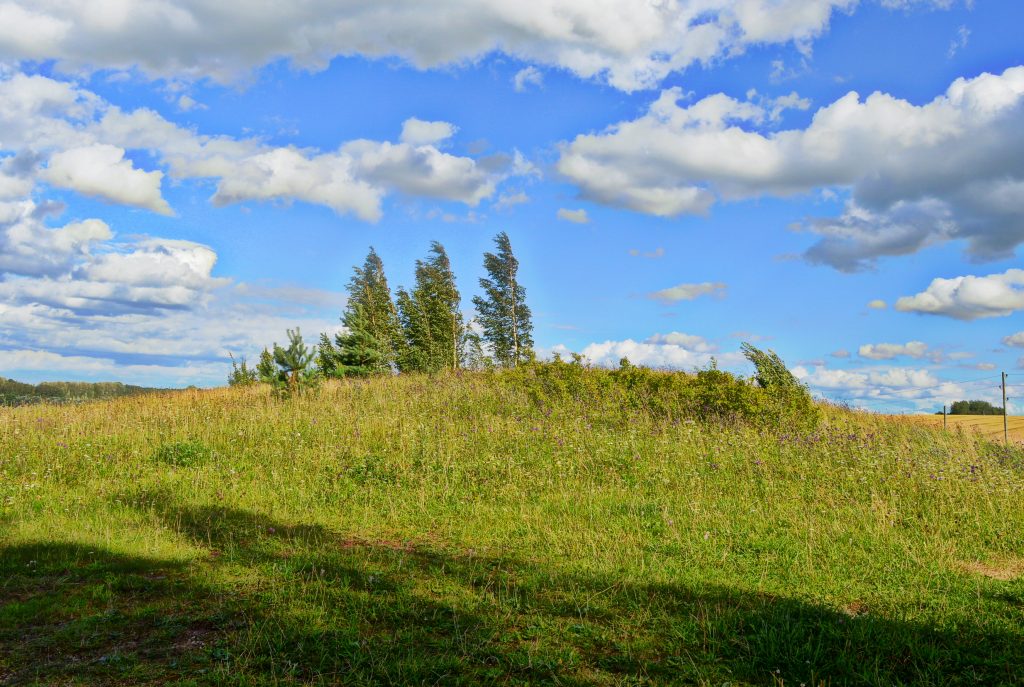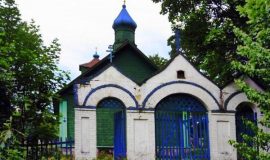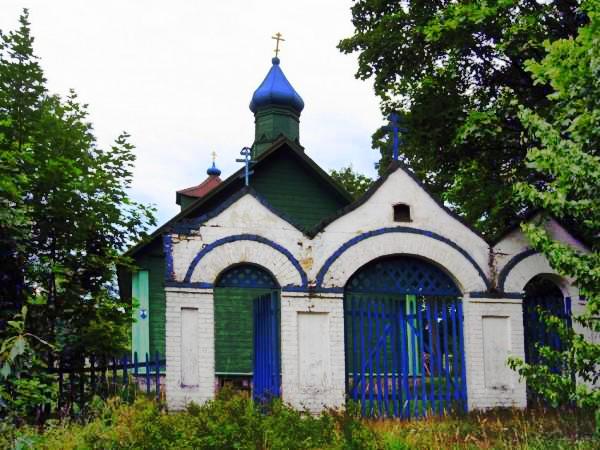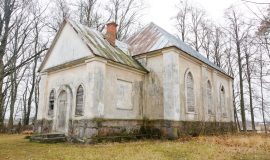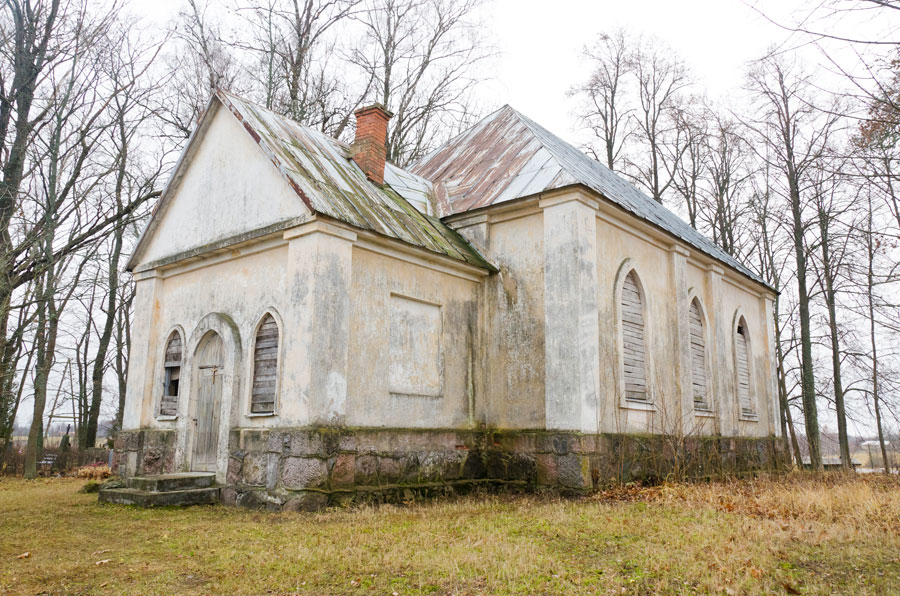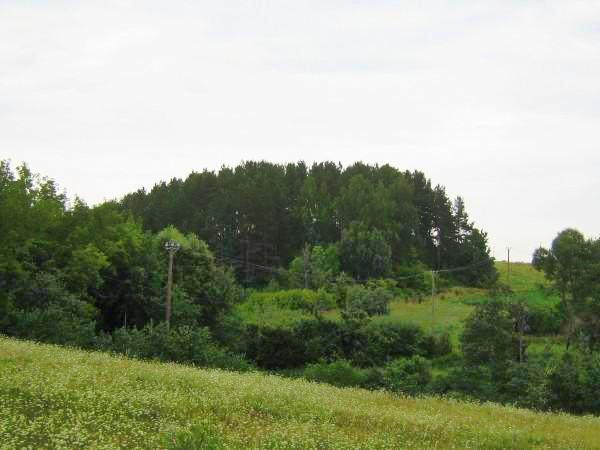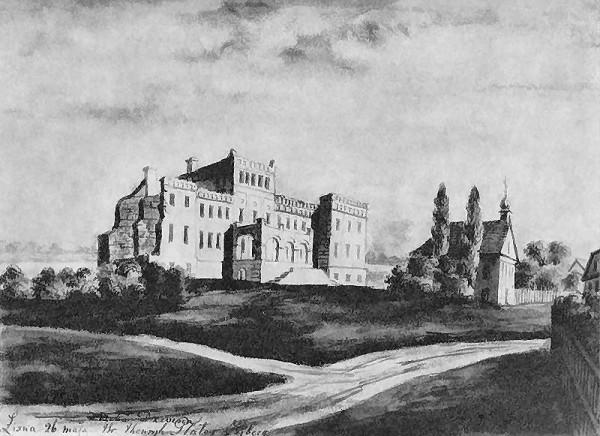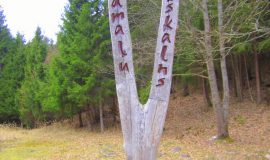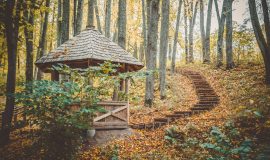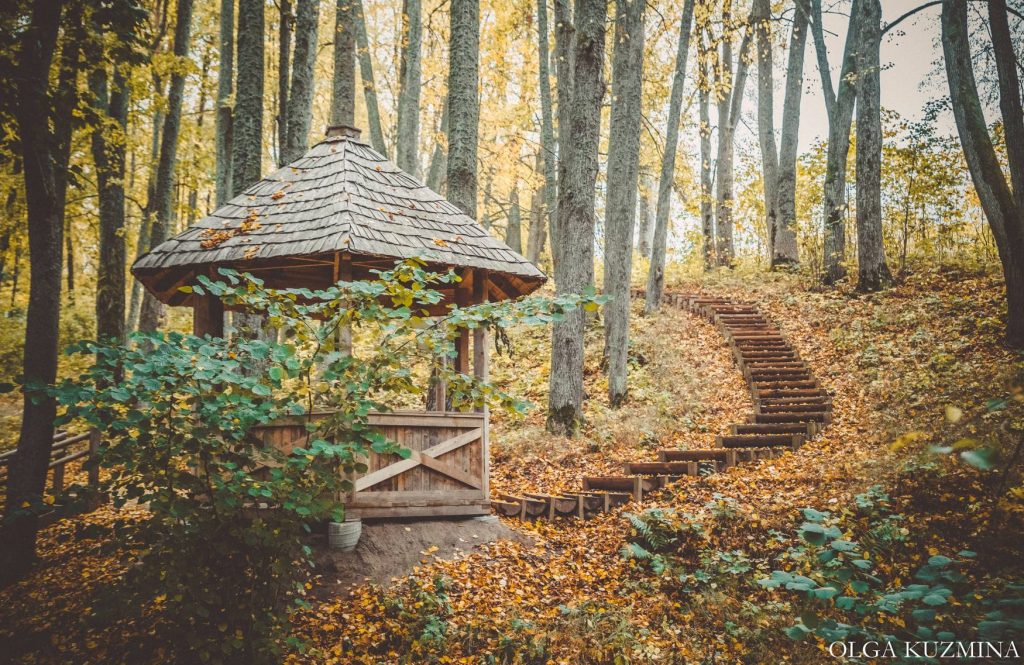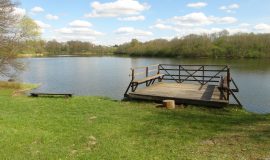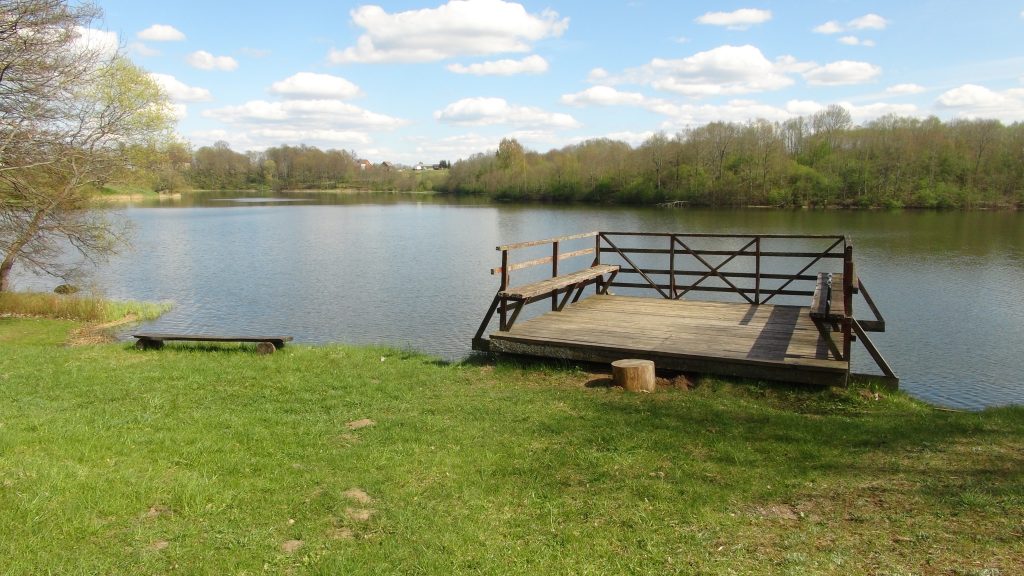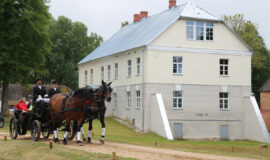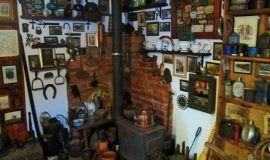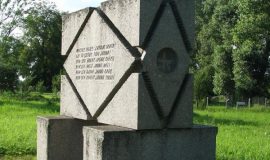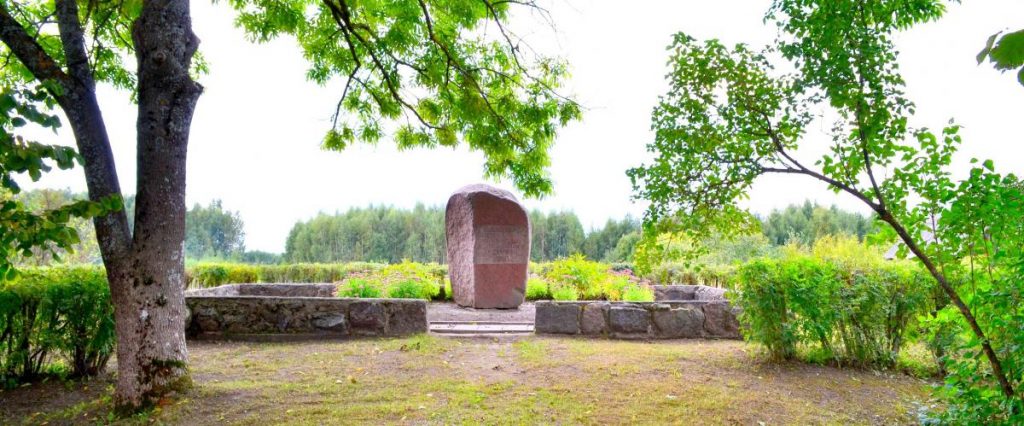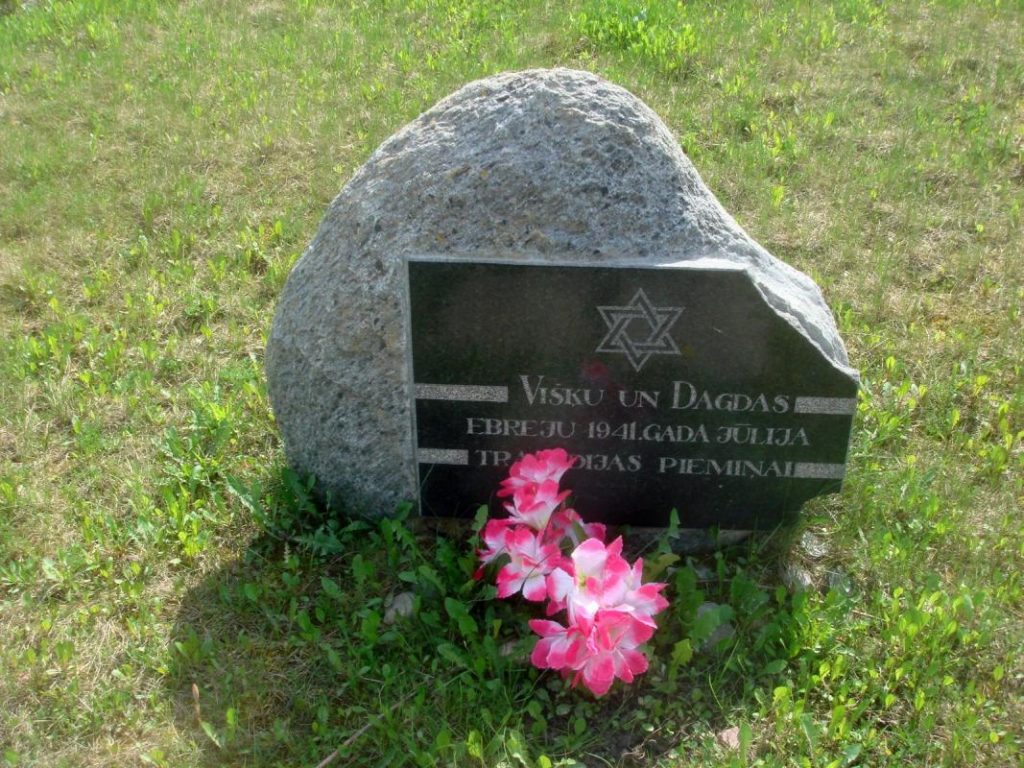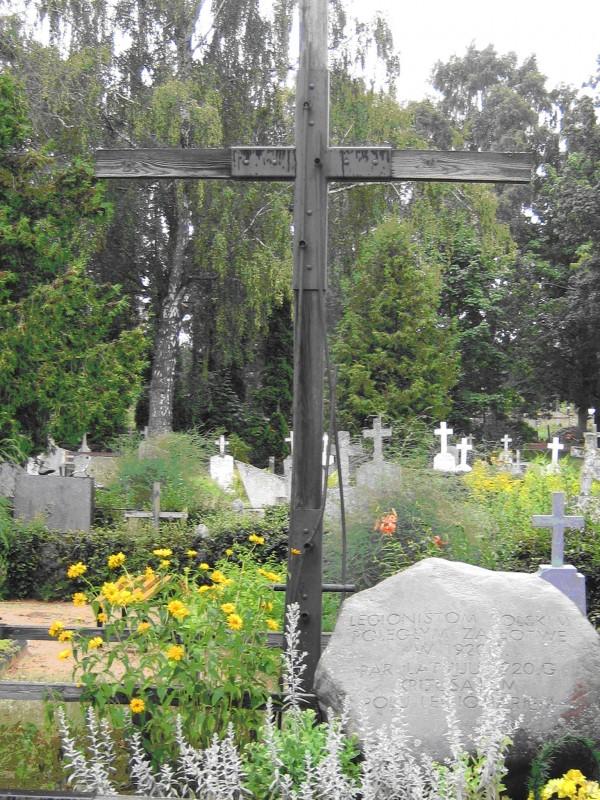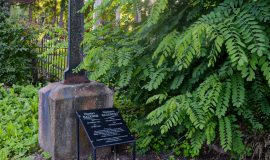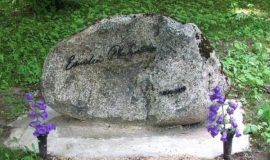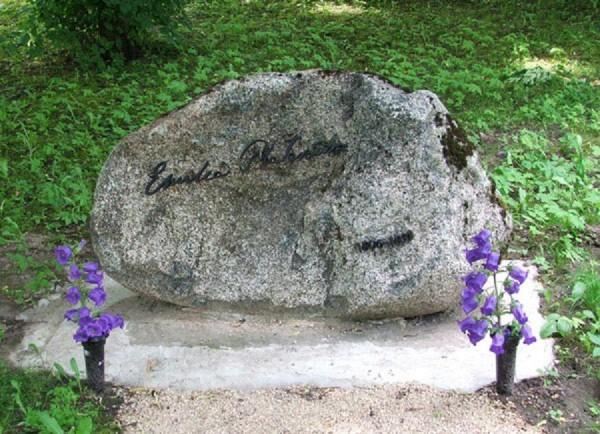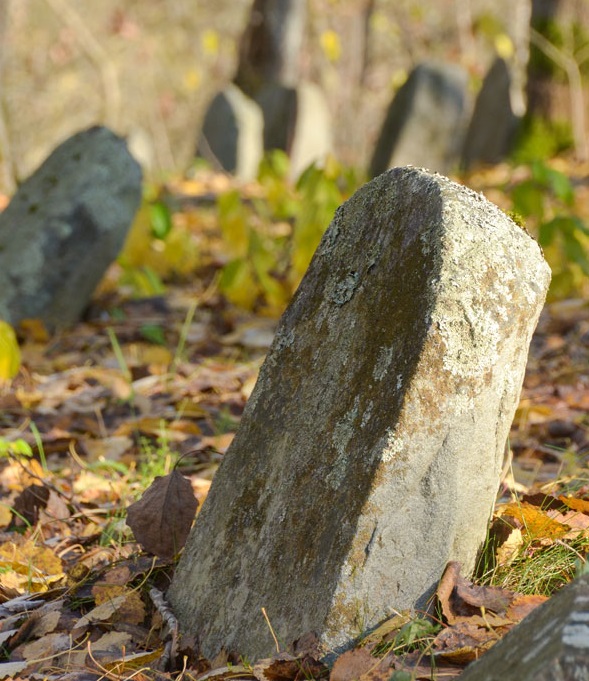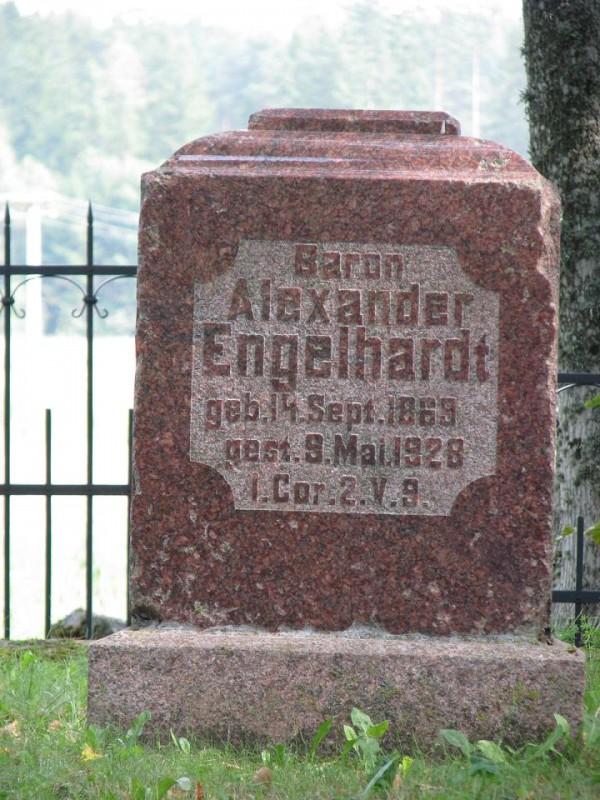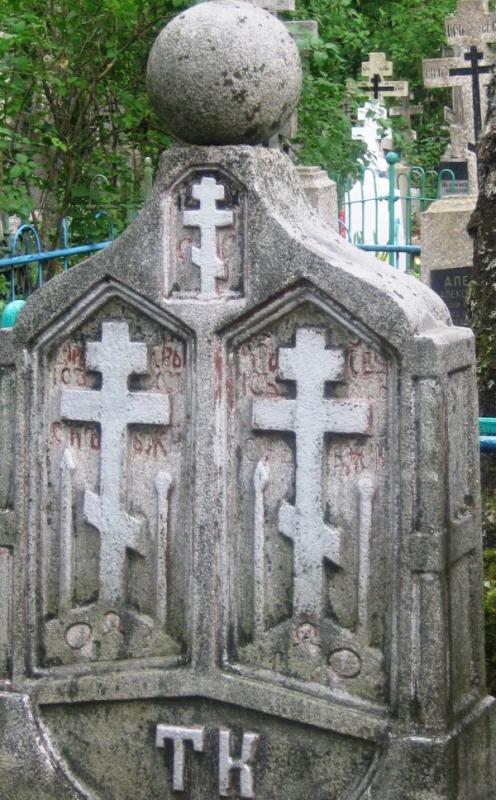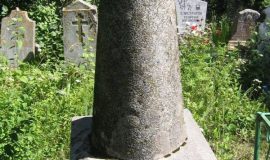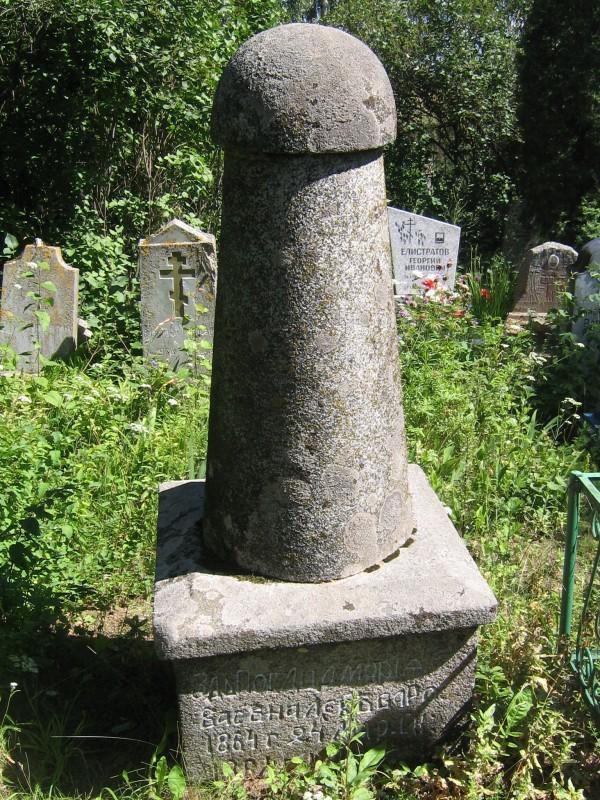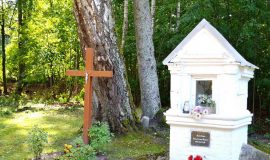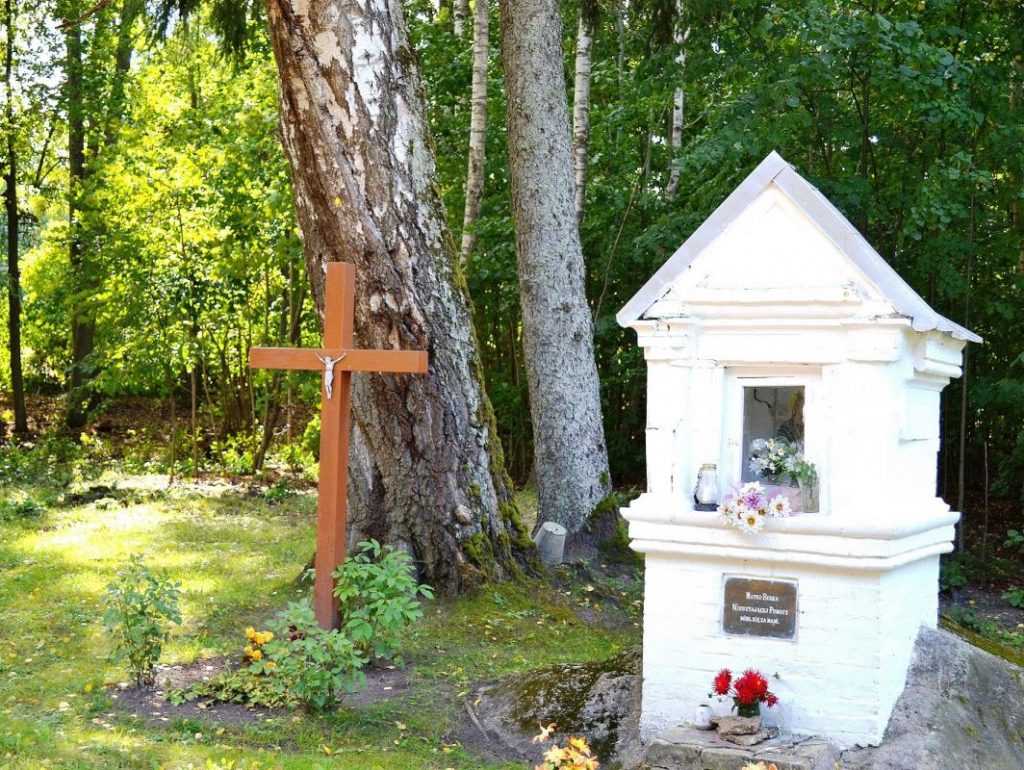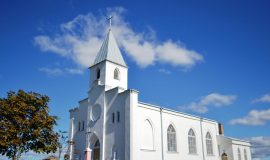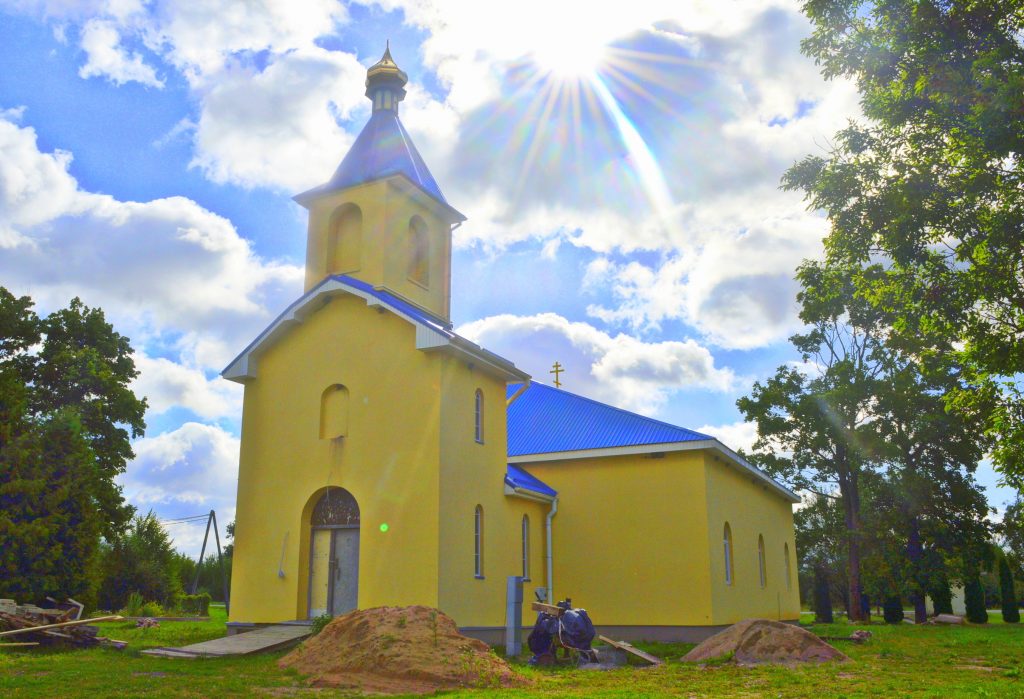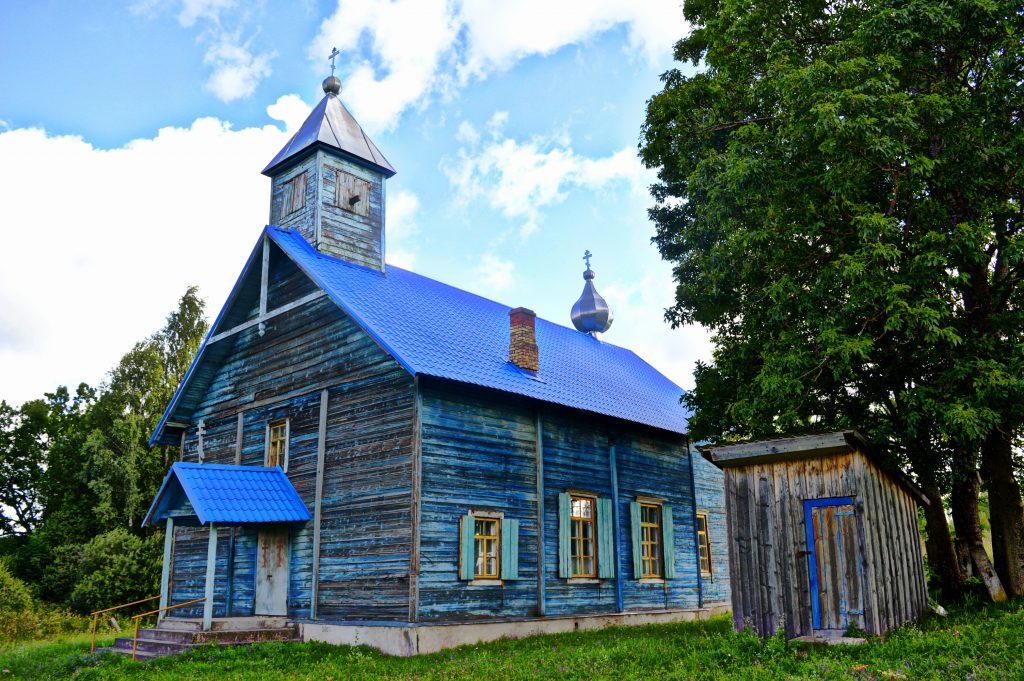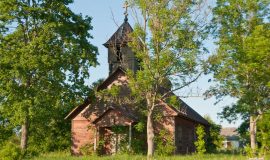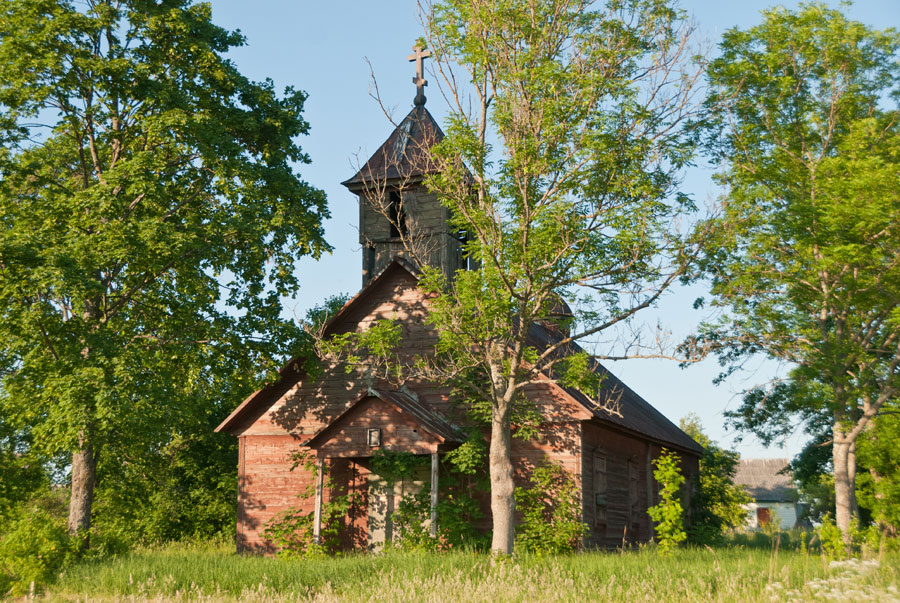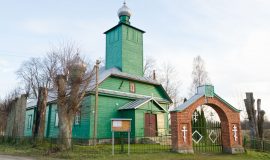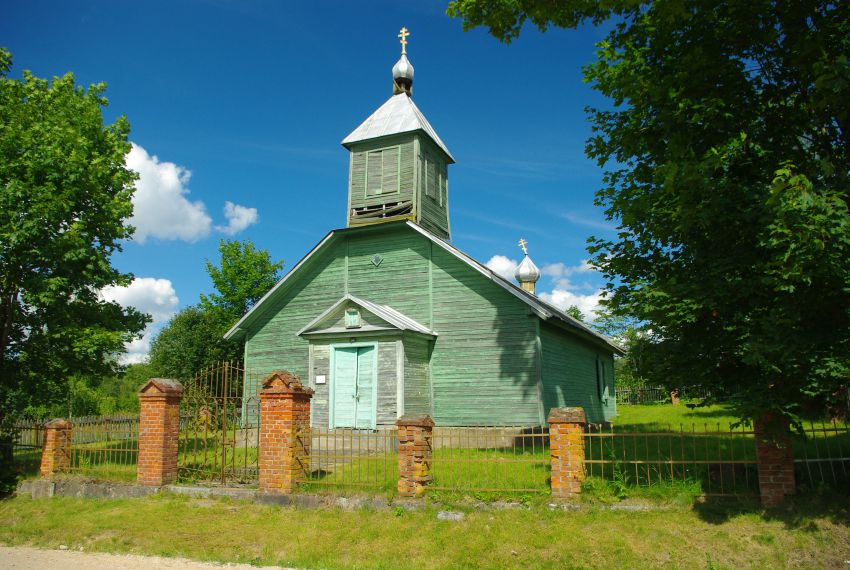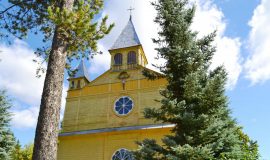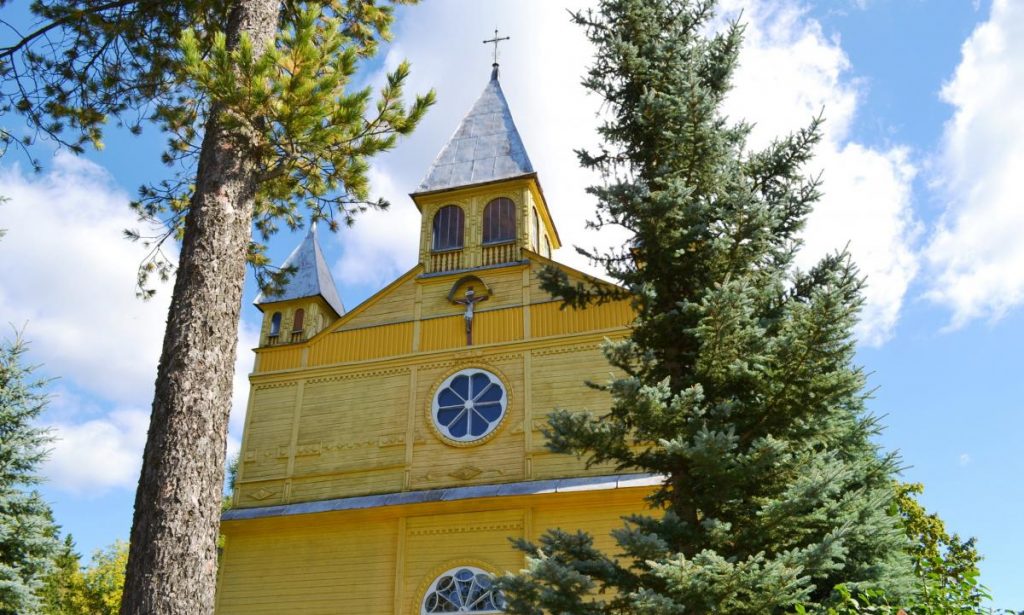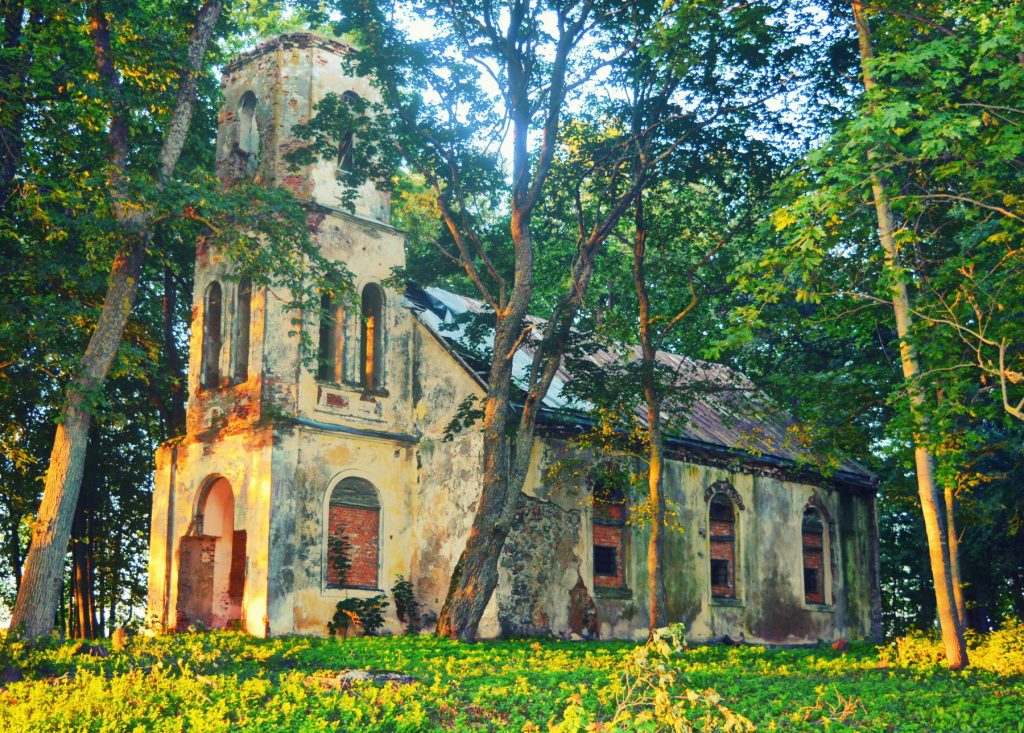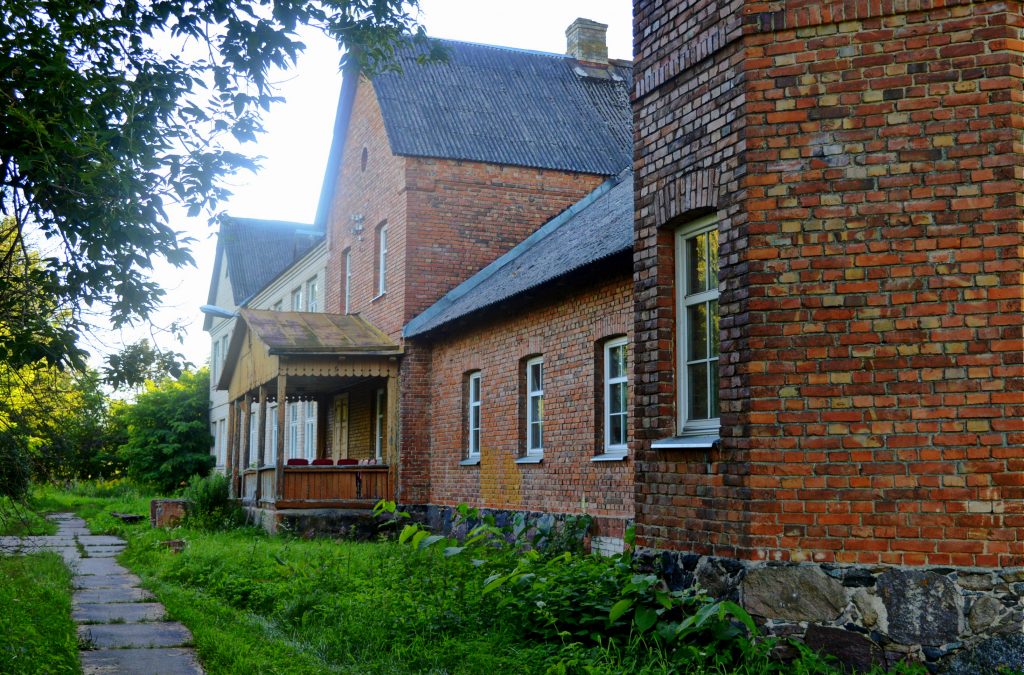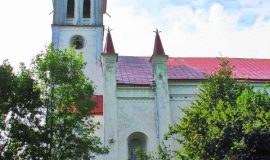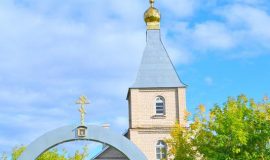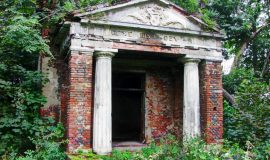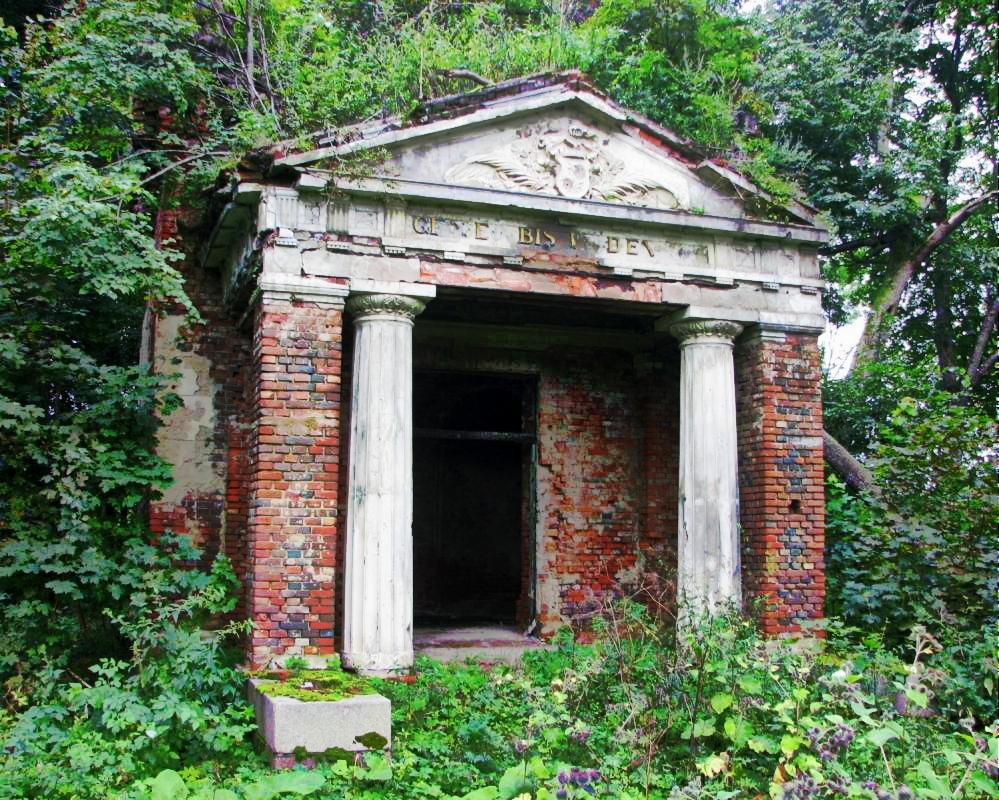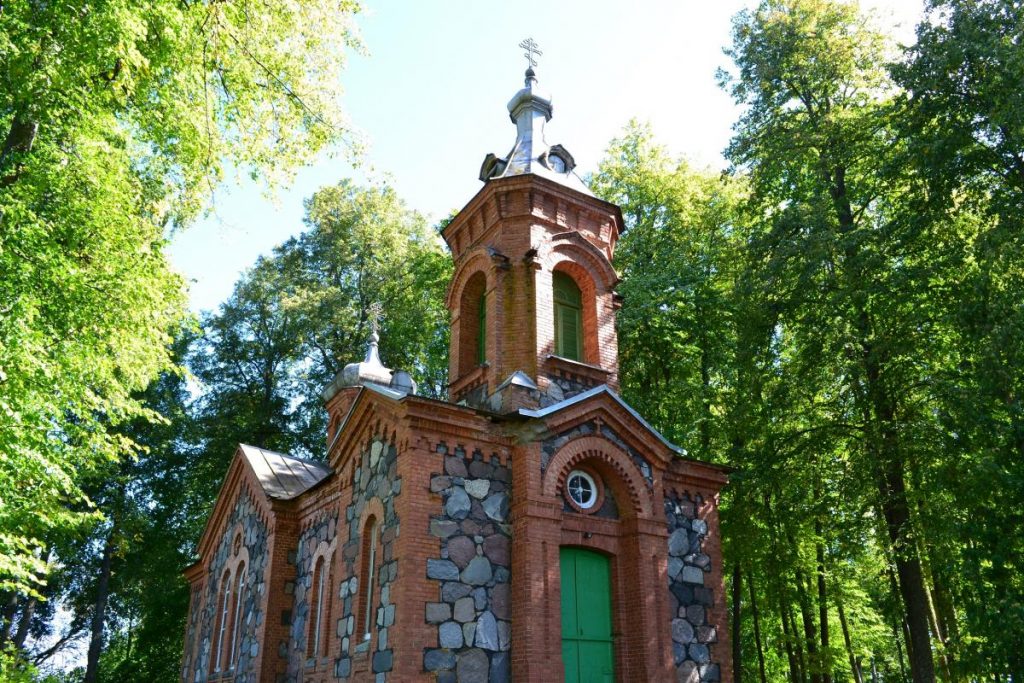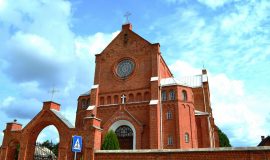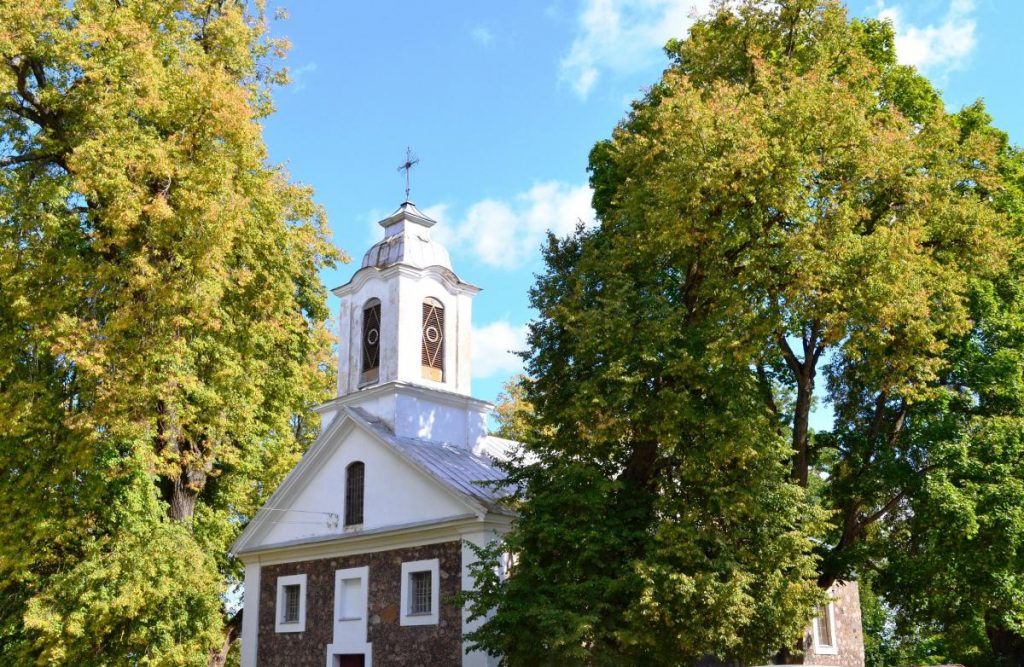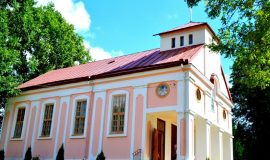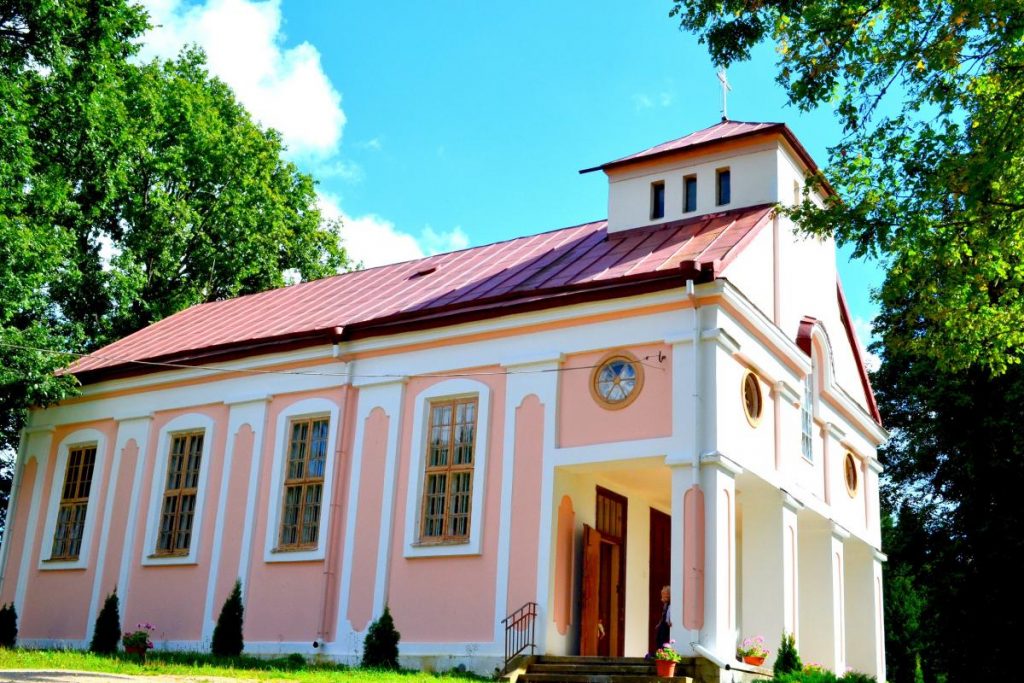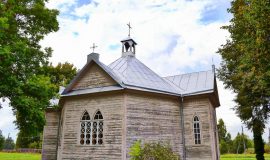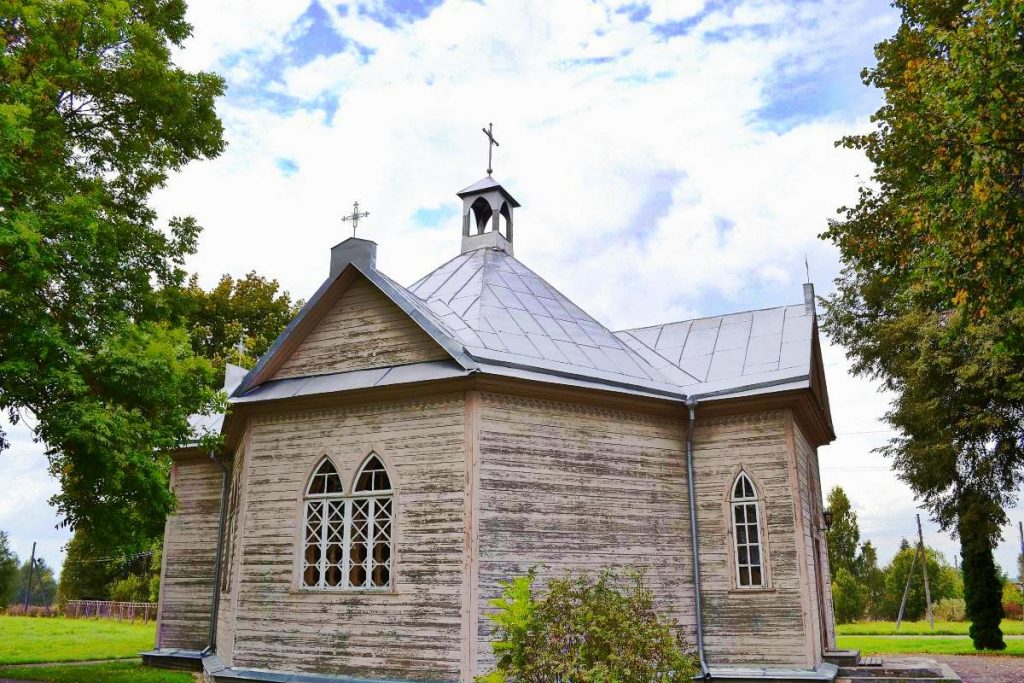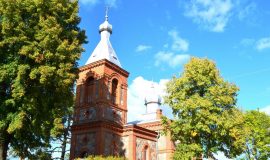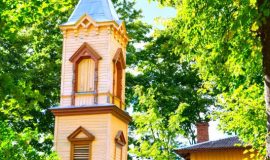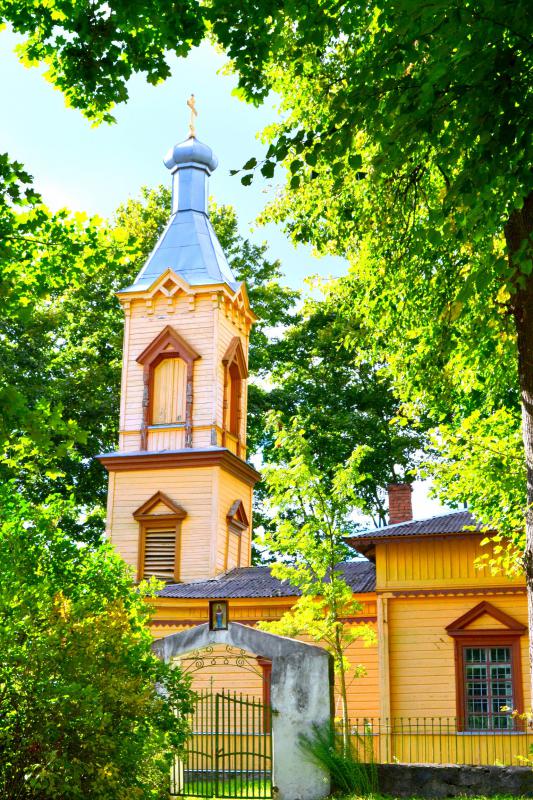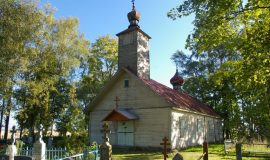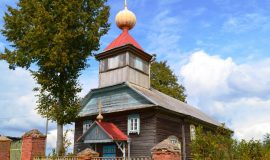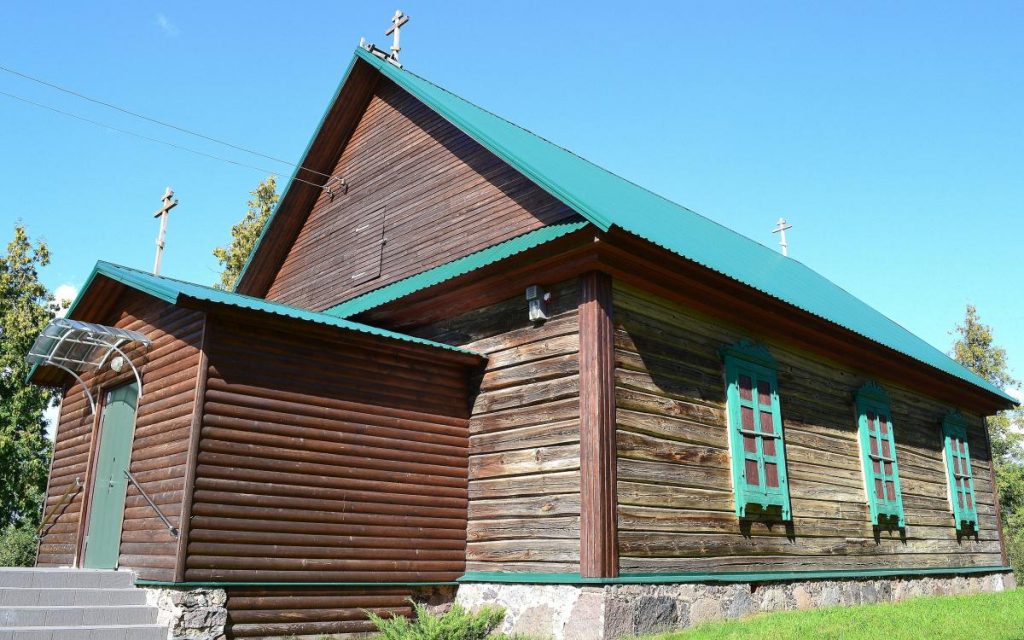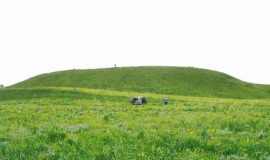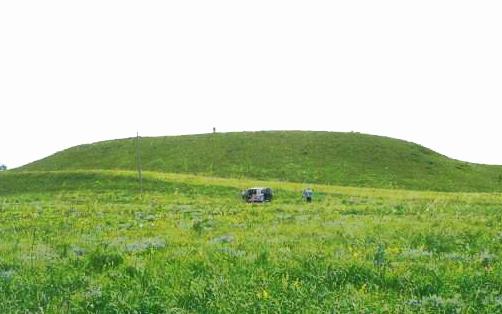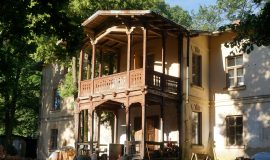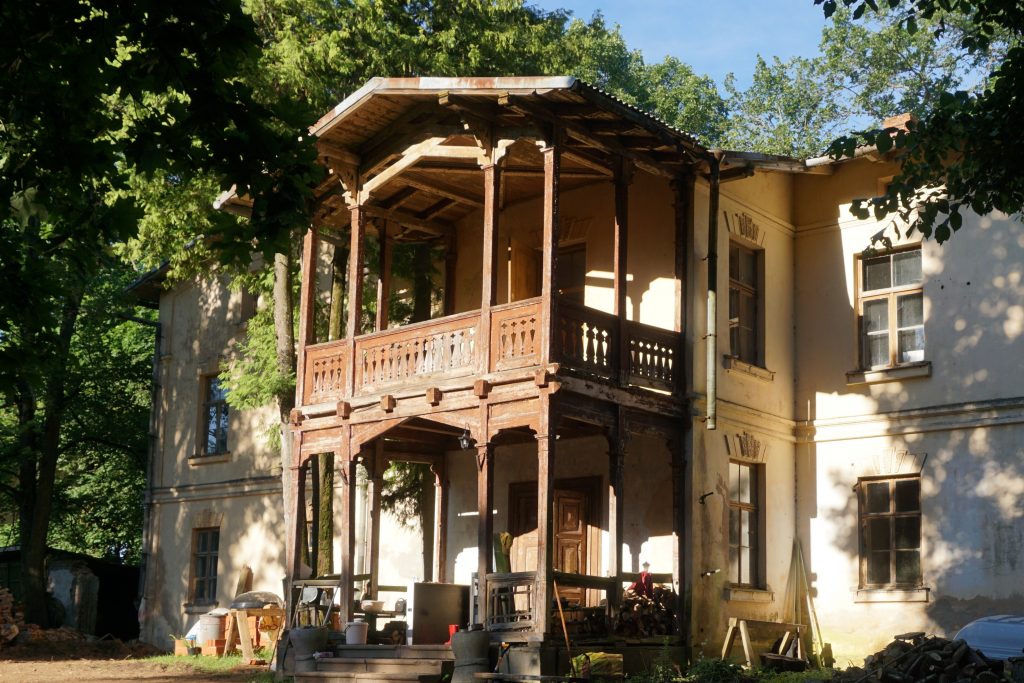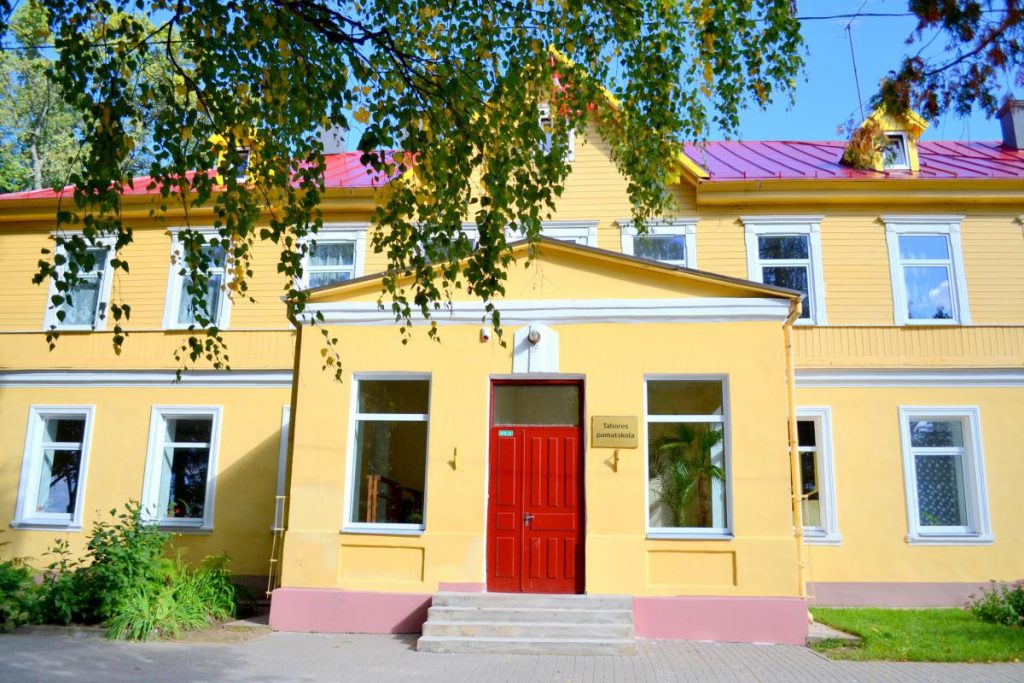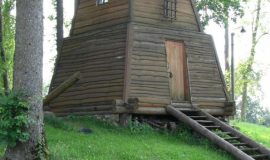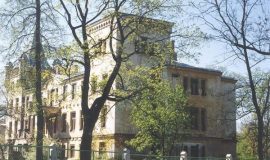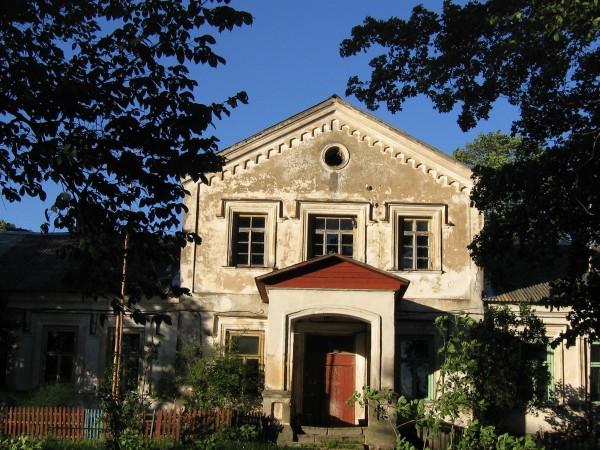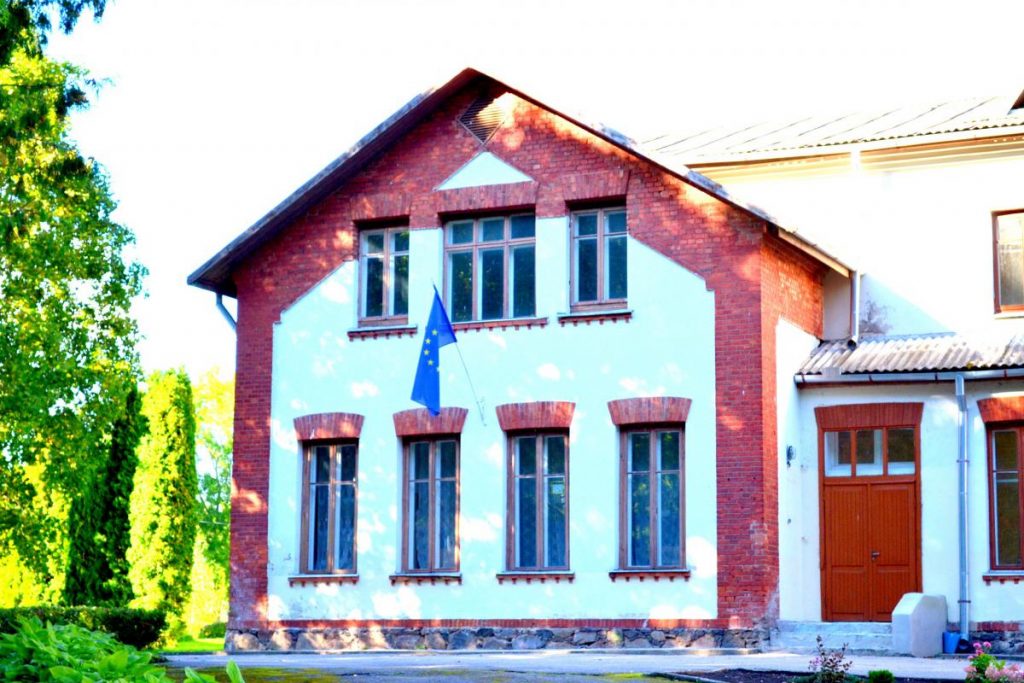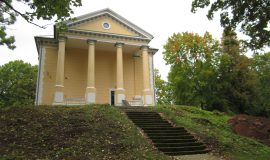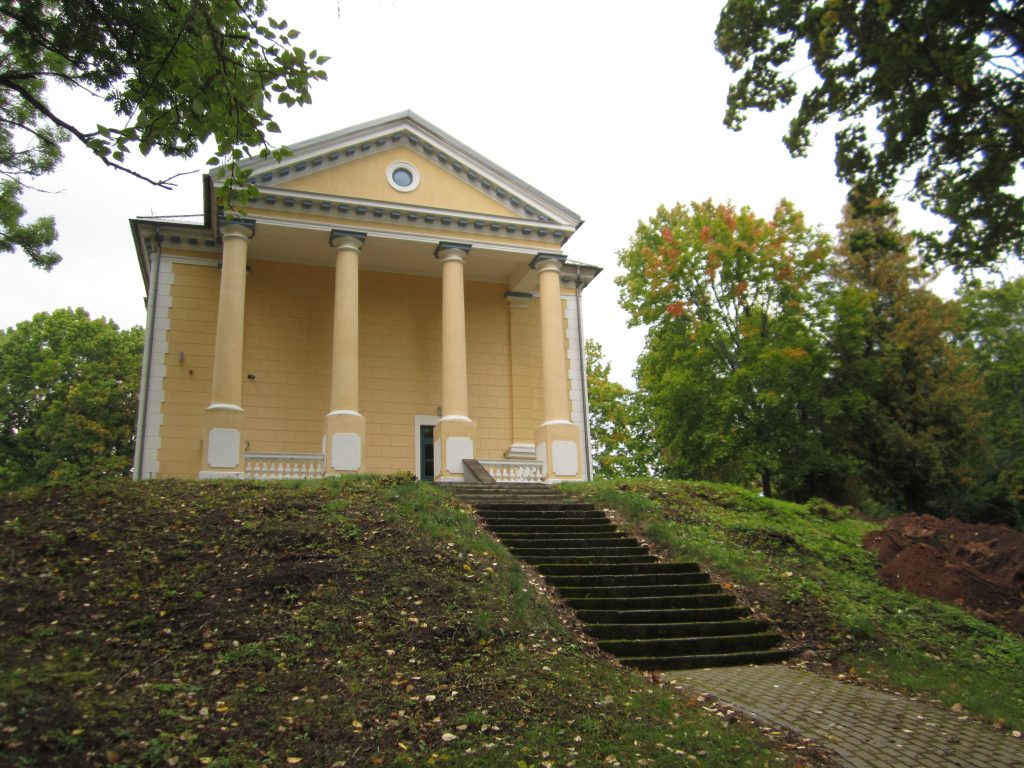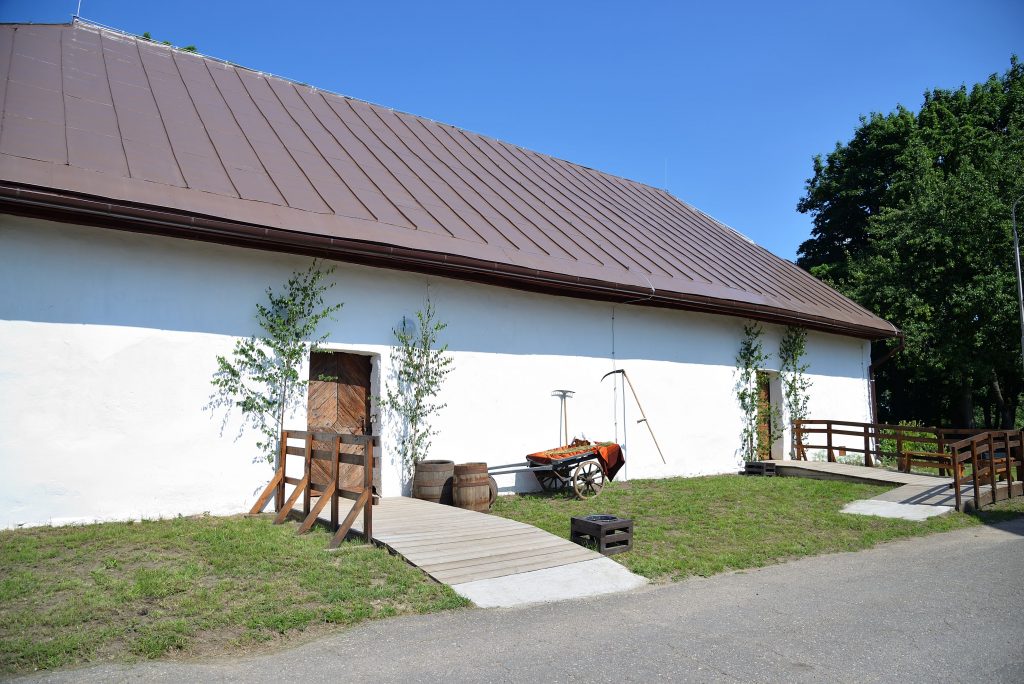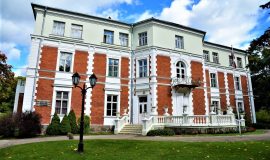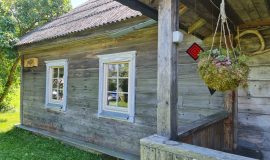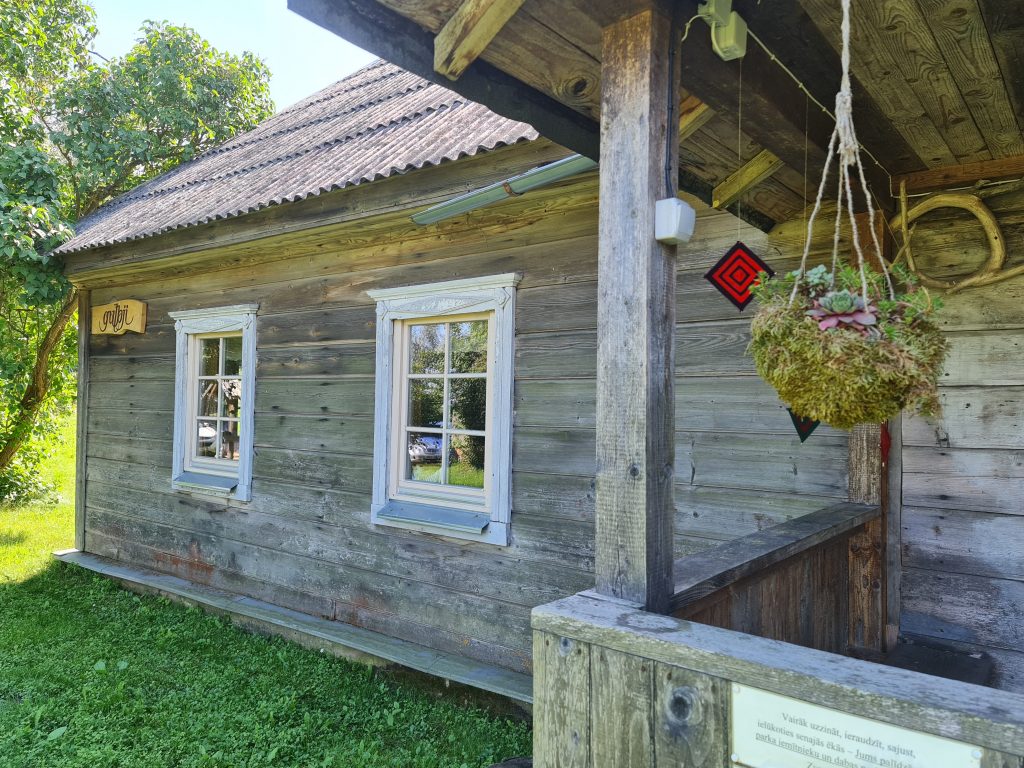Walking paths was made by the inhabitants of Liksna village in 1999 and from then every year this paths has been extended. There are walking paths, well-equipped recreation places, creative forms of wood and metal, including the Love Tree.
Culture and history
Vecsaliena (Chervonka) Manor Castle
Vecsaliena (Chervonka) castle was built in 1870 in the Neogothic style and is located in a bend of the park, which was created in the 19th century. This picturesque building with a dynamic and complex composition of the volume is a real fairy-tale castle.
Slutiski Village and Old Believers’ Rural Courtyard
Slutiski Village is authentic inhabited village, where visitors can get acquainted with the unique culture and household of Old Believers in Latgale. Slutiski Village was included in a State protected cultural monument list in 2016.
The Museum of Military Vehicles
2 World War II military equipment private collection is unique in the fact that the objects are found in the former battlefields and skillfully restored. Here you can see Soviet army tanks, battle attack landing car, all-terrain vehicles, and other military vehicles guns and equipment units.
Naujene Local History Museum and Nature Information Centre
The museum expositions and exhibitions reflects nature, history and ethnography of region. Here is exhibited original works of the sculptor Valentina Zeile. Museum offers workshops and educational classes.
The House of Rainis in Berkenele
The childhood of Latvian poet, translator, master of drama, public and political figure Jānis Rainis (1865 – 1929) was spent here, in Berkenele Manor. There is opportunity to see expositions “Rainis and Berkenele”, “Nursery”. Museum offers a wide range of workshops and the opportunity to host seminars.
Roman Catholic Church of the Sacred Heart of Jesus in Liksna
Liksna Church was build in Neo-Gothic style. The building of Catholic Church in Liksna was finished in 1913. Churchs silhouette is the most important landscape dominant of Daugava valley in environs of Kosa Lake.
The Skrinda family museum
Museum’s permanent exhibition is dedicated to the life and work of first national awakening members in Latvia – Skrinda brothers. There is an opportunity to participate in various thematic programs and local crafts workshops. Here offers the opportunity to taste latgalian traditional food “coma” local bread, honey and herbal tea.
Leisure Park “Stalkers”
Well-equipped rest park is located in picturesque place on the bank of the Daugava River on the territory of Daugavas Loki Nature Park. It is possible to organize a wide range of activities in the park. There are children’s playgrounds, outdoor grills, tables, terraces, benches etc. Several tourist groups can visit the park at the same time.
Private Collection of Antiques of “Egles” Farm
Private Collection of Antiques of “Egles” Farm There is a private collection of antiques in a log barn of “Egles” farm. Here you can see a variety of ancient farm tools: the centuries-old exhibits and horse harness, and the first mechanized equipment.
Roman Catholic Church of St. John the Baptist in Viski
Catholic Church in Viski was built in period 1908 – 1925. It is significant national landmark, one of the few sacral buildings in Daugavpils region that was built of abated stones and belongs to one-tower basilica crucifix church type.
Ruins of the Dinaburg Castle and Castle Model
In 1275, instead of the Naujene mound, the castle of Dinaburg was built by the Livonian Orden Master Ernest von Racenburg. Nowadays only ruins of the castle remained, but there is a stone model of this castle on the mound. Nearby is located Dinaburg Nature Trail and recreation area “Knights glade”.
Markova Mound and Cognitive Trail
In the surroundings of Markova Mound, there is a 1.6 km long Markova cognitive trail, where such objects as Markova Mound, Markova Cemetery, Putānu Streem, Putānu Streem Boulder are located.
Jezupova (Juzefova) Manor Park
Jezupova (Juzefova) Manor Park was built in the 19th century in Dutch style. Nawadays only a small part of the park, which contains more than 100 different species of plants, has survived.
Medumi Park and walking trail
In the beginning of the 20th century Lacky, botanical garden manager from St. Petersburg, created a park near to Medumi lake. Now this is a popular place for fishing and relaxation on the beach of Medumi lake. 2 km long trail is located in the park.
Vabole Manor Park
The Park was landscaped in a 19th Century in English style by the count Plater-Zyberk. Many historical buildings (part of the old manor and horse stables) remained to this day. There are 21 tree and brush species, pond and equipped recreation area in the park.
Vecracina Mound
Located in Vecracina of Naujene parish on the right bank of the River Daugava, 2.5 km to the south of the railway station in Izvalta. The settlement is surrounded by a deep ravine (depth about 18-27 m) from the east and south-east.
Assumption of the Blessed Virgin Mary Orthodox Church in Lipiniski
The church was built in 1906 and was consecrated in 1908. The church was constructed in the form of a cross in Byzantine style and is made of red bricks and has two towers. There are a lot of decorative elements in the facade design.
St. Peter and Paul Roman Catholic Church in Jezupova (Juzefova)
The building of Jezupova (Juzefova) St. Peter and Paul Roman Catholic Church was started in 1934 and was finished in 1961. After the building was finished the church was taken from the parish and there was established club. In 1989 the church was returned to the parish.
Zemgale Catholic Church
It was consecrated in 2006. The church is located in the building of the previous estate and in Zemgale station building (1928).
Silene Roman Catholic Church of the Assumption of the Blessed Virgin Mary
Present-day wooden building of Silene Roman Catholic Church was built in 1913, not far from the burnt down chapel that was built in 19th century. Silene Church is one of the largest wooden churches in Riga’s Metropolis.
Maskovska’s (Moscow) St. Virgin Shelter Orthodox Church
Built and consecrated in 1879. The church’s altar is simple, without ornamentation. Especially expressive is church gates built in Novgorod style and several ancient icons.
Orthodox Church of St.Peter and Paul in Danisevka
Church is located in a picturesque place Daniševka, near the Lake Lukna. The building was built and consecrated on August 31, 1908. There is a grave of the first pastor of this church – I. Digilev (1869-1933) in the church garden.
Holy Cross Roman Catholic Church in Jaunborne
Built in 1859 at will of Polish landlord Julius Sivickis. It was rebuilt in 1890 and renewed in 1921. There is a cemetery around the church, where are burials of Sivickis family.
Elerne Ascension of Lord Jesus Roman Catholic Church
The building of the Elernes Church was constructed in 1650 by Heinrich Tienen. Until 1761 it served the needs of the Lutheran Church, but later the Lutherans exchanged with Catholics with the Sīkele Church. The architecture of the church, in both volume and details, is in correspondence with other churches that were built in the territory of the Courland Duchy of that time.
Sikele Lutheran Church
It was built in 1819. At first the church belonged to the Catholic community, but it was given back to Lutherans instead of Elerne church in the second half of the 18th century.
Crucifix Way
The largest number of crucifixes in Latvia is located on the territory of the Vabole parish. After the Second World War, many were destroyed – from 44 crucifixes only 29 remained.
Monument to the Suffered Inhabitants of Kalupe and Victims of the 20th Century
Three stone composition marks in details the Revolution of 1905, the wars and the experienced pain of export, as well as people’s experienced sufferings in Kalupe.
Grave of Birkineli Estate Owner Vidzeme Landmarshal Hamilkar fon Felkerzam
The former owner of Birkineli estate Vidzeme landmarshal Hamilkar von Felkerzam is buried at the Lutheran cemetery in Birkineli.
Monument to the Fallen National Partisans
The monument to 5 fallen national partisans is erected at Misteli cemetery. It was designed by the sculptor I. Folkmanis.
Memorable Place of Vecpils Cemetery
There are three white crosses in memory of the Old Vecpils Cemetery that was destroyed in 1986 because of the planned construction of the Daugavpils HES.
The Medieval Cemetery of Slutiski and Ancient Settlement
There is a memorial sign on the side of Slutišķi village, which testifies that there was a Slutišķis medieval graveyard (15th-17th centuries).
Memorial stone for writer and ornithologist Karlis Grigulis
The well-known ornithologist and a children’s writer K. Grigulis (1884 – 1972) was born in Stumpuri of Saliena parish where he spent his childhood. The stone was erected in 1994.
Cemetary of Polish Army Soldiers Killed in Latvia Liberty Battles (1918-1920) in Jankiski
The white concrete cross with a black granite plate and the inscription in Latvian “The cemetery of Polish soldiers fallen for Latvian independence in 1919-1920” is erected here.
Maskovska Mound
It is situated 0,5 km from Maskovska Orthodox Church in the direction of Ambeli. There is a picturesque view on the Viski Lake.
Old-believer’s Chapel in Panteliski (Briveri)
The chapel was built in the late 19th century. It was made of logs and is covered with horizontal boards. There is a high bell tower covered with the unusual four-sided roof. The windows are decorated with jamb, which is ornamented with woodcuts.
Lutheran Church in Demene
The church was built in 1895–1896. The project author is the architect Wilhelm Neumann. The church is a small, one-volume hall-type building with one-tower facade. The building has a gable roof. Now, the building is laid up and is not used.
Zabornaja (Podgurje) Mound
It is located between Zabornaja and Podgurji. People also call it Napoleon redoubt. In 1812 according to the order, the guns of the French army were placed on the mound to repeal attacks of the Russian army.
The Place of Liksna Manor
Liksna manor house was built in 1771 in the baroque style. Now you can see only fragments of ruins.
Sudmali Mound
The mound was registred the first in 1882 by A.Bilensteins. In 1926 E. Brastins published the description of the mound.
Jaunsvente Manor Park
Jaunsvente park was built in the end of 19th century. Park’s area is 5.22 hectares and there are 27 different species of trees.
Subate Lake Park
Subate Lake Park is a favorite recreation place of inhabitants of Subate and guests during the summer season.
Dviete Manor Complex
The Dviete Manor Complex was built in the 19th century and belonged to the Plater-Zyberg family.
Bebrene mil
Just next to the Bebrene Manor and its wall, there is a mill building with a miller’s residential house.
The private collection of First World War heritage and local history
The family of Stikani is engaged in collecting historical artifacts. A collection of World War I and World War II artefacts has been created.
Šlosbergas (Pilskalnes) muižas vārti
The gates of Šlosberga (Pilskalne) Manor (1918) are the only historical remnants of the Plater-Zībergs manor. Pilskalne Park also features a monument dedicated to the countess’s dog (1892–1898).
The Memorial Place of the Former House of Rainis Parents in Randene
Father of Rainis Krishjanis Pliekshan rented Randene from 1869 till 1972. House was destroyed during the Second World War – тow at the place of the former house you can see the memorial sign.
The memorial stone at the place of the former Janis Rainis parent’s house in Vasilova
The memorial stone is set in Vasilova, on the left side of the highway Daugavpils-Rezekne, at the place where Vasilova halfmanor is located. The father of Janis Rainis Krisjanis Pliekshan rented the halfmanor in Vasilova since 1981.
Memorial Place to Victims of Genocide – to the Shot Jews in Viski and Dagda
The mass murder place of where Jews from Viski and Dagda is located in Klana Viski, Viski parish. In 2001 the memorial place was built and a small granite stone was placed here.
The mark of the most southern point of Latvia “Saules puke”
Sculptor Vilnis Titans created four granite sculptures and placed them in the most remote locations in Latvia within the project “Latvia in the Sun’s Sign”. “Saules puķe” denotes the farthest southern point.
The Monument to the Polish Soldiers who were killed in Latvian War for Freedom (1918-1920)
In Catholic cemetery in Viski, near the entrance on the left side, there is a mass grave of 20 soldiers of the I and V regiment of the I Legion, who fell in the battle near Vishki and Dubna.
The Grave of the Teacher of Janis Rainis Gustav Bazeners
German language teacher of famous Latvian poet Janis Rainis – Gustav Bazeners (1827-1883), who worked at the German school in Griva, was buried in Berkeneles Lutheran Cemetery.
Cemetary of Polish Army Soldiers Killed in Latvia Liberty Battles (1918-1920) in Laucese
There are two Polish soldiers’ burial places at the Catholic cemetery in Laucese. The Polish soldiers who have fallen on September 27 and 28 in 1919 and January 1920 in the battles for Griva bridge are buried there.
Memorial Stone to Emilia Plater
The memorial sign is located in Liksna Trails, in the beginning of Emilia Plater path. Emilia Plater (1806 – 1831) is Poland and Lithuanian national hero, who lived in Liksna estate since 1815. She led a patriot combat unit in Latgale and Lithuania during the time of Polish uprising, which happened in 1830-1831.
The Jewish Cemetery in Viski
The cemetery started at the beginning of the 19th century. It was used also by Somerset (now Aglona) Jews. The oldest gravestones are stone steles at the cemetery that date back to the 50-90s of the 19th century. Most of the monuments are well preserved.
Counts Engelhardt Family Cemetery
It is located near the former manor castle Sengeida, it was built by count Eugene von Engelhart. In 1996-1997 cemetery was restored and cleaned up by old baron’s grandson, Baron Sigvard von Engelhart.
Grave steles at Old Believer’s Cemetery in Krivosejeva
Near Old Believer’s prayer house, there are two Old Believer’s cemeteries, where it is possible to observe the steles of the 19th century.
Tombstone at Moscow (Maskovska) cemetery
In the vicinity of (Maskovska) Orthodox Church, on cemetery, there is a gray granite monument in the form of a phallus. Barely visible inscription: “devica” (virgin) is buried there and the years of her life (1864-1884), can be seen on the granite base.
Jaunborne chapel (crucifix)
There is a bricks chapel in Jaunborne, with a niche, in which there is the Virgin Mary’s permanent assistant painting in a wooden frame.
St. George Roman Catholic Church in Ambeli
Catholic church in Ambeļi displays typical use of local traditions of wood-building of 18th-19th centuries in sacral architecture, its structure represents work of professional painting and sculpture experts of baroque period.
Blessed Jesus’ Heart Roman Catholic Church in Demene
The construction of the Demene Church was started in 1932, but the Second World War stopped this plans. During the Soviet times here was a place of entertainment. Sacral meaning this building regained in the 80’s, but fully completed and consecrated in Church was only in 1992.
St. Ilija Orthodox Church in Malinova
The current St. Ilija Orthodox Church in Malinova is a rebuilt priest’s house. In 2010, the Culture House, located on the site of the former church, was burned down, now on this site new Orthodox Church is being restored.
Old Believers Chapel in Rubeniski
The chapel is build in 1907. Chapel has repeatedly lost its sacred meaning, but since 2003, the it has been repaired with the help of renewed parish. Local residents and Old Believer communities of Latvia help the church.
Old-believer’s Chapel in Bondariski
Old-believer’s Chapel in Bondariski was built between 1920 and 1930. The volume composition of the building is very simple: a single volume with a gable roof, a rectangular bell tower that “grows” from the roof and is covered with four-sided tent. The building is preserved in the authentic form.
Krivosejeva Old Believers Chapel
Krivosejeva Old Believers Chapel is built in the beginning of the 20th century, around 1906. The roof was erected in 1926. The chapel are built in the log house technique and clad with horizontally painted boards. Alongside the temple there is an Old Believers’ Cemetery, where you can see ancient unique grave monuments – steles.
Old-believer’s Chapel in Ascuki
The present chapel was built in 1910 at the place of the former chapel. After the Direktive “On Toleration” in 1905, Old Believers were allowed to build religious buildings and to build up their cemeteries.
Protection of the Holy Virgin Chapel in Danisevka
The chapel that has been preserved till nowadays, probably was built after 1905. The only decorative accent is a small diamond-shaped window over the entrance. The common image of the chapel has been created thanks to the precisely found proportions of shapes.
St. Peter and Paul Roman Catholic Church in Laucese
Catholic Church is wooden building built in period from 1921 till 1923 in place of old wooden church (1797), which burnt down in 1920. This was one of the oldest churches in Zemgale owned by landlords Ludvinghauzens-Volfs.
Egypt’s Lutheran Parish Church
The church was built in Vilkumiests by landlord A.Oettingen in 1823. In 1863 the church’s tower was built. During World War I it was destroyed, and during World War II – absolutely vandalized.
Berkenele (Birkeneli) Lutheran Church
Church building (1830) was built for Friedrich von Klopmann’s funds. The tower’s peak is decorated with an ornamental windshield, but the church has not been functioning for many decades since the Soviets have seized it.
Didrihstein (Laucesa) Manor House
The manor house was built of red bricks with a tower in the Neogothic style. Victoria Plater-Zyberk was the owner of the estate in the early 20th century. It used to be an elementary school of Laucese.
St.Virgin Mary’s Roman Catholic Church in Nicgale
Stone building of the church was built in the Neo-Gothic style by order from Count Henrih Plater-Zyberk in 1863.
St.Family’s Roman Catholic Church in Aukskalne
Church is 18.5m long and 8.5m wide wooden building covered with bricks. Church was consecrated in 1947. Previous church burnt down in 1944, and most of building materials for the new church was donated by parish members.
Holy Virgin’s Old Believer Chapel in Voitiski
The Old Believer community in the village of Voitiski was founded in 1740. The first chapel was a wooden blockhouse, without a footing, with a straw roof. Срapel suffered from fires several times, so in 1979 it was decided to build a stone chapel.
The Charnel House of Brigene Manor House
Тear the former complex of Brigene manor where is situated one of the most beautiful national landmarks in Daugavpils district – a mausoleum that was built by order of landlord Max von Engelhardt in honour of his deceased wife Dorothea von Engelhardt (1862 – 1898).
Russian Orthodox Church of George the Victorious in Januciems (Fabijanova)
It was build thanks to August Pfug project and was consecrated in 1878. The building is made of chipped stones with a filling of a splinter. The corners and the edges of the church are made of red bricks, produced in the Kalkuni brick factory.
Kalupe Sacrament Roman Catholic Church of the Holy Altar
The church was built from red bricks in the period from 1861 to 1882. It has cross-shaped form without towers.
St. Michael’s Archangel Roman Catholic Church in Svente
In 1800 landlord Casimir Plater-Zyberk in Svente built stone church in honor of the Trinity. Sacral building was consecrated in honor of Michael Archangel.
St. Anthony’s Roman Catholic Church in Sprukti
St. Anthony’s Roman Catholic Church in Sprukti was built of cement bricks at the expenses of the parish and the bishop in 1933 – 1938.
Medumi St. John the Baptist Roman Catholic Church
The church was built in the period from 1933 till 1935 according to the project of architect Pavlov under the supervision of J. Klonis at the expenses of the parish.
Jesus’ Heart Catholic Chapel in Dubna (Varsavena)
Chapel was built in 1800 as a wooden octagonal building with an extension of the altar part. This is the only sacred building of this type in the Daugavpils district.
St. John the Baptist Orthodox Church in Saliena (Tartaks)
Saliena Church was built in 1894 from abated rocks and it had brick lining inside. Church was consecrated in 1895.
Skrudaliena Orthodox Church of the Assumption of the Blessed Virgin Mary
In 1862 in Skrudaliena was built new wooden church that became the parish church in 1872, as a new belfry and cupola, as well as an iron roof was built up.
Old-believer’s Chapel in Korolevscina
Chapel was built in 1918. Later it was rebuilt – as a result new forms are similar to the motifs of the Protestant churches, and they were probably borrowed from the surrounding cultural environment in Latgale and testify the process of the mutual influence between the two cultures.
Old-believer’s Chapel in Krivani
The Chapel was built in the 20th century. The building has one tower and several windows of different sizes with decorative shutters.
Old Believer’s Chapel in Medumi
The available sources indicate different dates of the prayer house building – in the range from the early 20th century until 1940. The chapel is interesting because it gives the idea of how the religious building of Old Believers looked till 1905, at that time, when they were not allowed to give a recognizable form to their churches.
Lasini (Lasenbeka) Mound
It is located on the left ancient bank of the river Daugava near Daugavpils. It is partially damaged by the war trenches. The goods for fishing network, the handmade dish fragments and other antiques were found in cultural layer. It was inhabited from the first millennium BC till the first millennium AD.
Robeznieki Mound
It is a new-opened mound (1998) and is located near Belarus border. It is visually impressive and well-preserved. The flick ceramics is found in the cultural layer. It was inhabited from the end of the first millennium BC till the middle of the first millennium AD.
Lielborne Manor and Park
Lielborne Manor is the only manor complex in the territory of the Nature Park „Daugavas loki“. There is the old castle, probably built in the 18th century, as well as the new castle built in the classical style in the first half of the 19th century.
Tabore Manor
Manor was built in the second half of the 19th century (possibly in 1875). During World War I, the manor was severely damaged. In the Soviet era, there was Tabore’s eight-year school, but until 2016 Tabore Elementary School was located in the building.
Grain Flourmill
It is located in the center of Vabole near Skrinda family museum. The workers of Skrinda family museum in the flourmill present baking traditions in Latgale.
Kalkune Manor Castle
The manor castle was built in 1890-1892 according to project of the well-known architect V. Neiman. The castle itself is asymmetrical, with towers, turrets and roof constructions its leaves quite a picturesque impression. The manor house is abandoned and not inhabited.
Brunenes (Brunu) Manor Buildings
Stables, 2 stone buildings and manor house remained here from 19th century. Before the agrarian reform of 1920, the manor belonged to the family ob Liveni barons, but later in the manor house was located school, local store and apartments.
Vabole Manor Buildings
Count Boleslaw Plater-Zyberk began the building of the estate in the early 19th century. The barn, the manager’s house and the stables have remained till nowadays. In the former stabler building there is the Vabole Secondary School.
Ilgas Manor Castle
Designed by architect Wilhelm Neimann, the building was constructed in the second half of 19 c. as hunting palace of manor Ilgas.
ANCIENT CRAFT WORKSHOP “KLĒTS”
The ancient craft workshop “Klēts” has been established in the House of Rainis in Berkenele. On the first floor of the building there is an exposition of various ancient crafts and a multifunctional room for organizing various events. The attic is divided into two parts – one of them is an exhibition hall, but in the smallest part of the attic there is a heated room – a workshop, where in summer and winter craftsmen can work, but visitors can learn various skills of ancient crafts.
Exposition of a beaver
In the information center of the Dviete floodplain “Gulbji” the exposition of the symbol of Bebrene and an inhabitant of the Dviete floodplain has been created.
Bebrene Manor Complex
The ensemble of Bebrene manor is one of the few in Selonia, where all the 19th century manor houses’ building elements have been fully preserved – manor house, auxiliary buildings, park with gates and fence.
Ilukste Lutheran church
The beginnings of the Ilukste Lutheran church can be traced back to the 16th century. Selonia was a Lutheran land at that time.
Dviete Valley Information Centre “Gulbji”
In the summer of 2008, in the nature park „Dvietes paliene” on the Birds’ Island (Putnu Sala) in Bebrene parish was created the Dviete Valley Information centre “Gulbji”.
Antique storage “Sēļu istaba”
The storage of antique things has been created over many years, collecting and summarizing the cultural and historical heritage of Selonia and Ilukste.
First World War Museum
The First World War has left long-lasting scars not only in people’s destinies and hearts, but also in a large territory of present-day Latvia and Lithuania, where the so-called fronts were located for several years, including the “Life and Death” line. A complex system of fortifications with ditches, trenches and bunkers was built on both sides of the front line.


